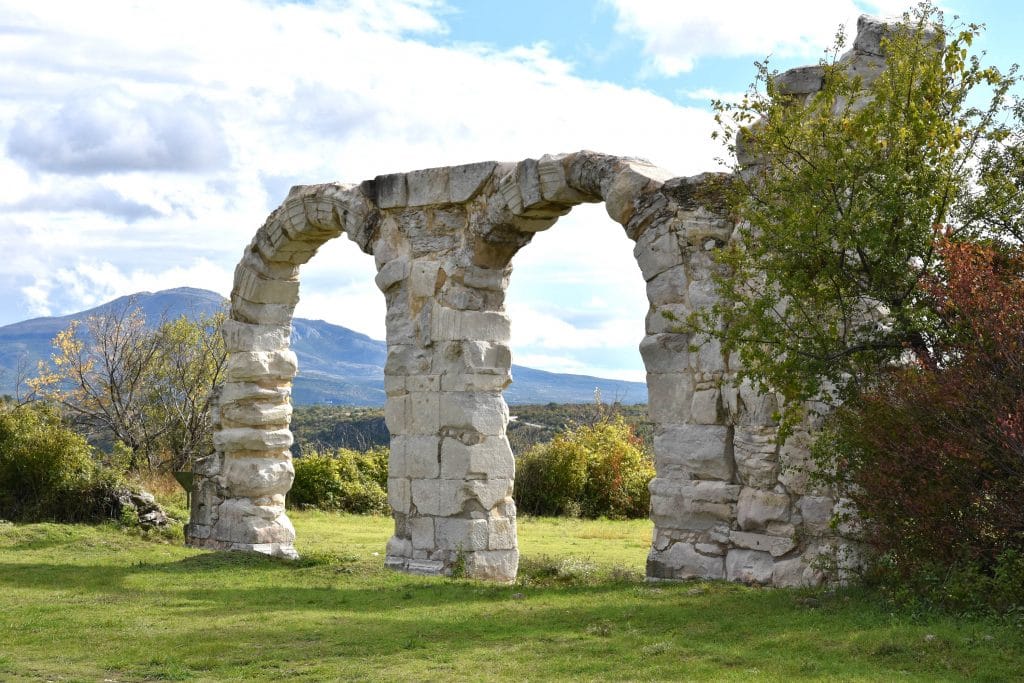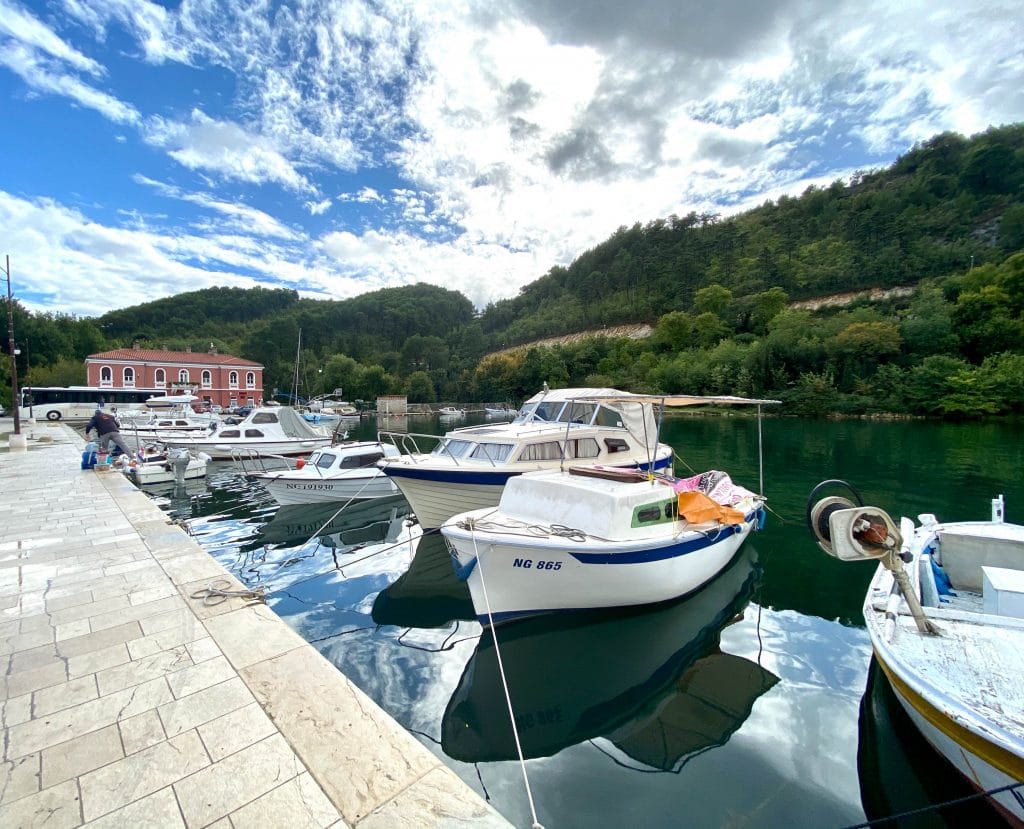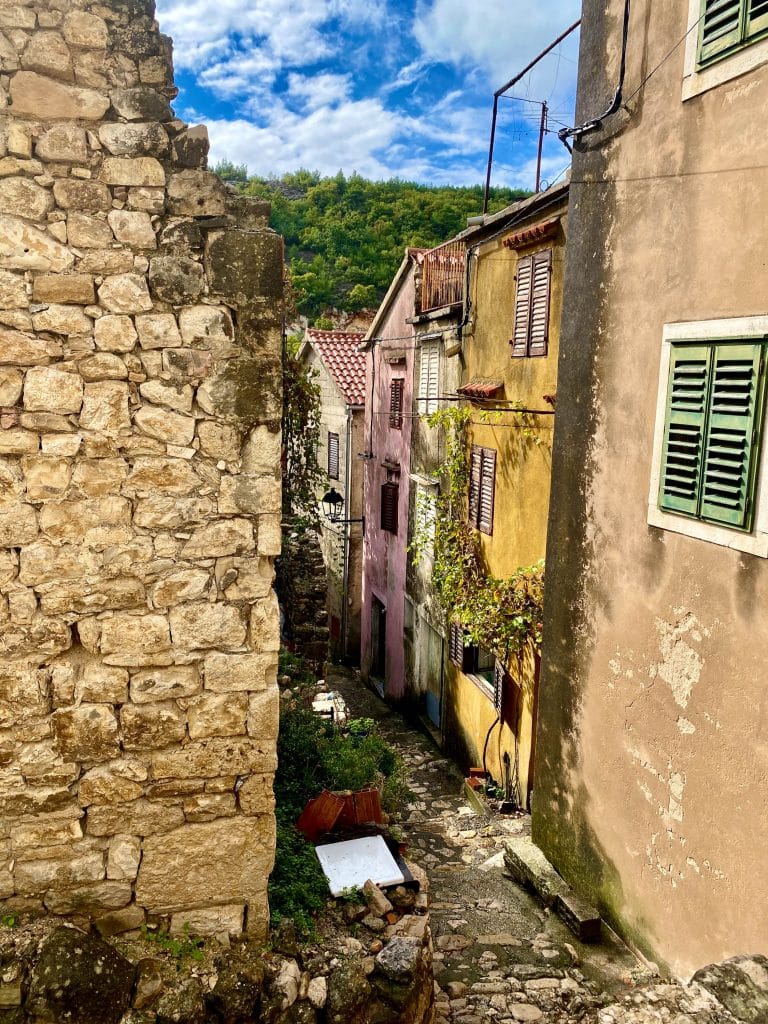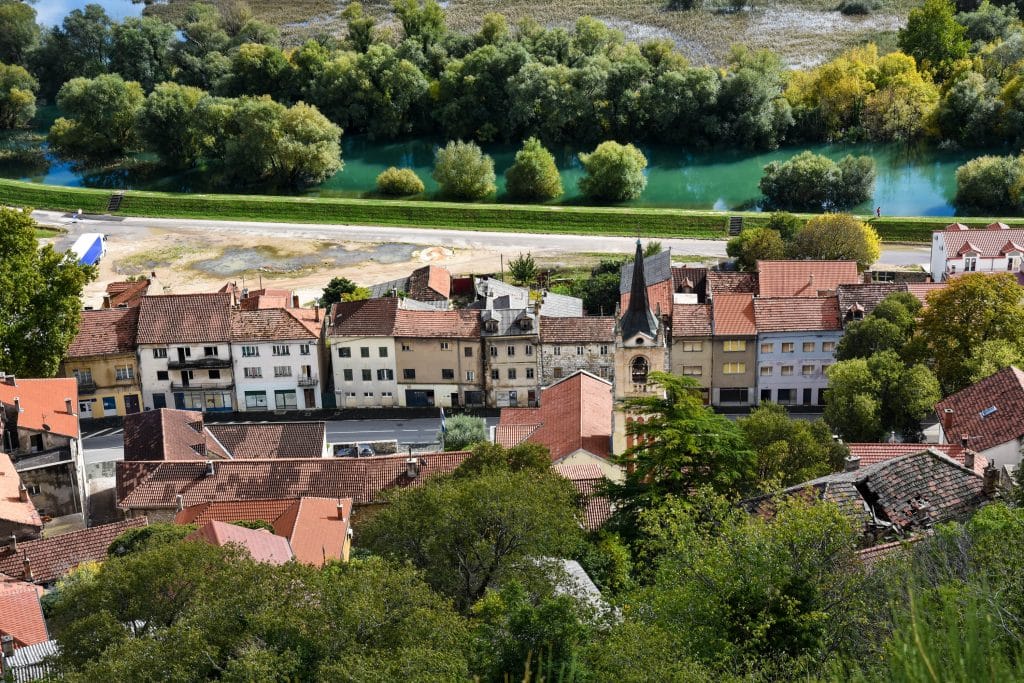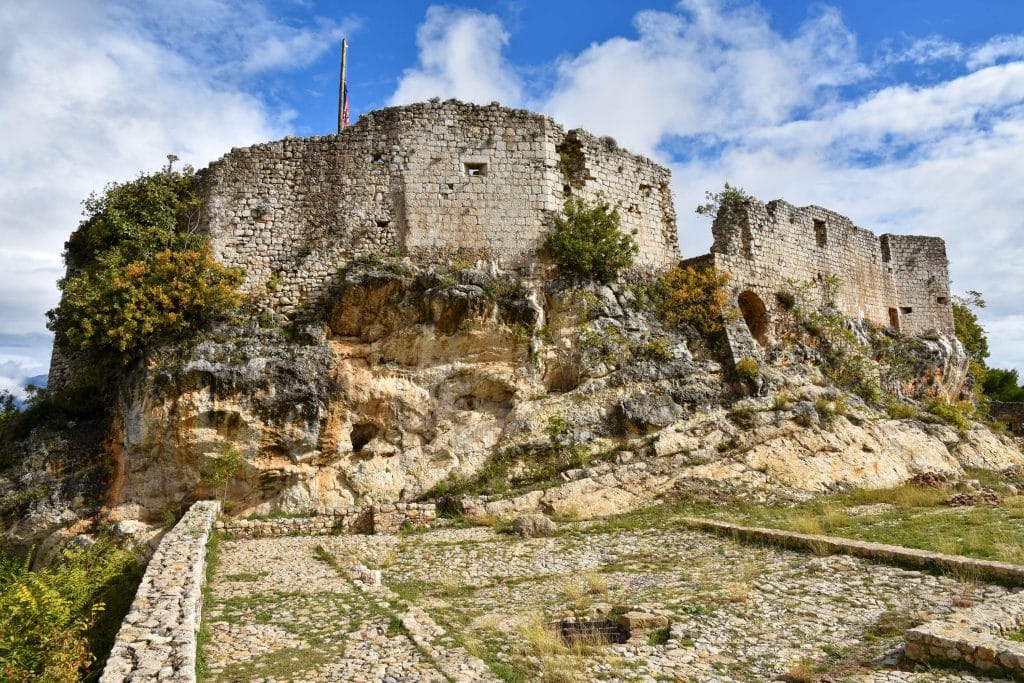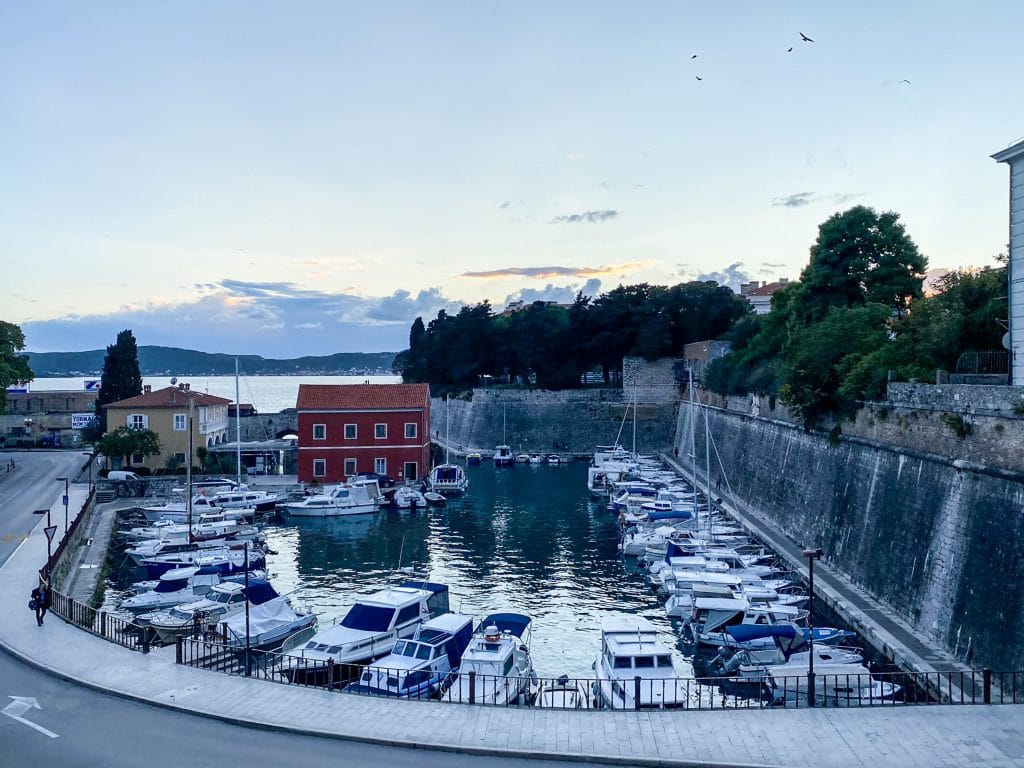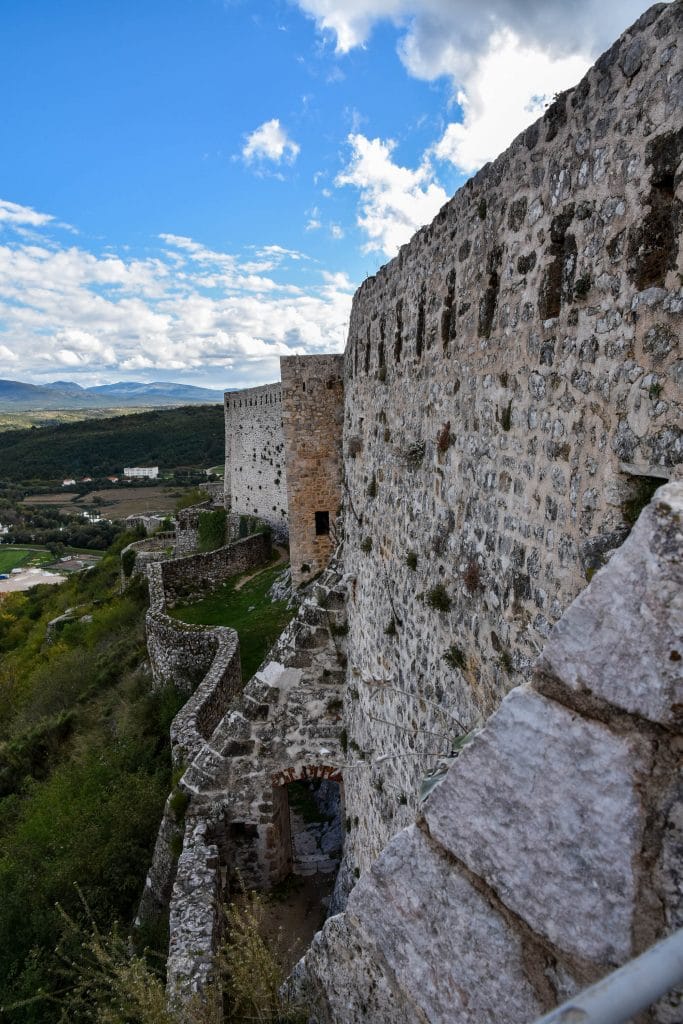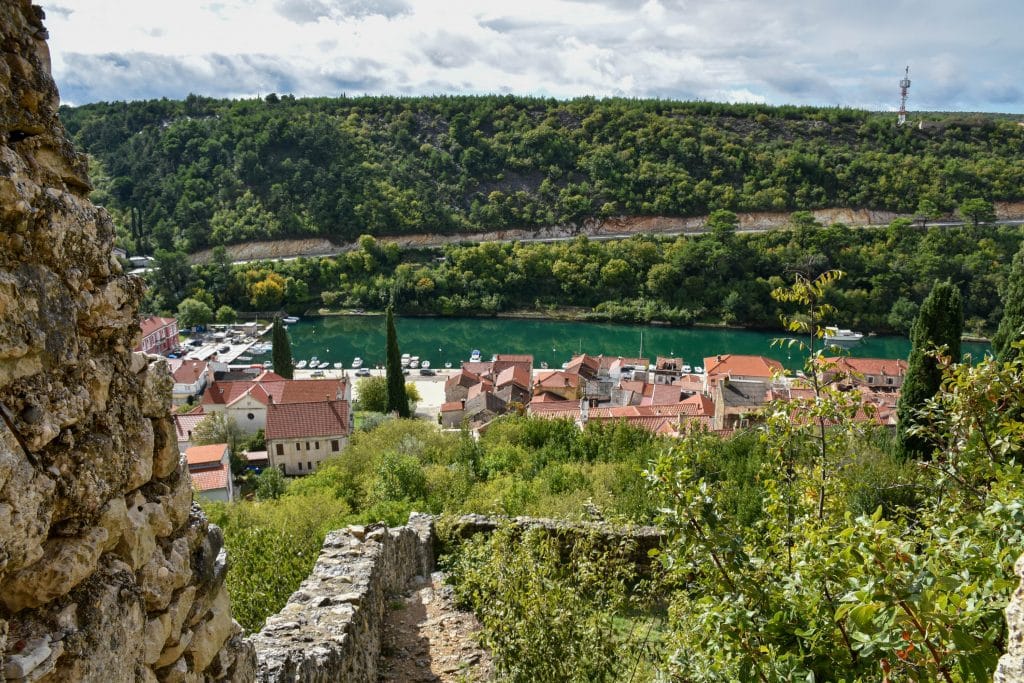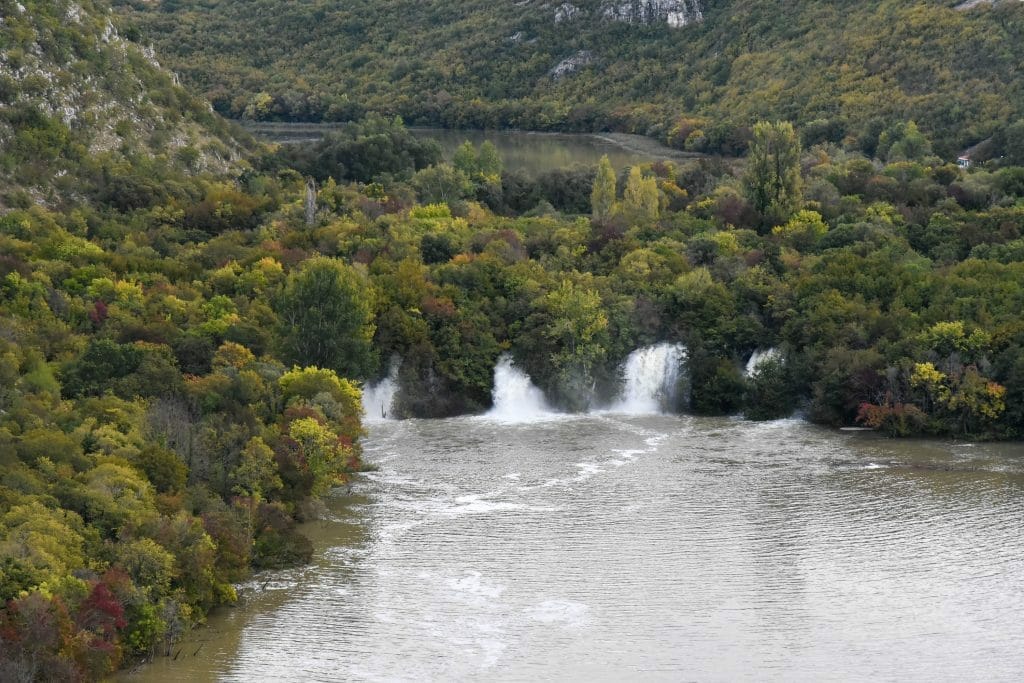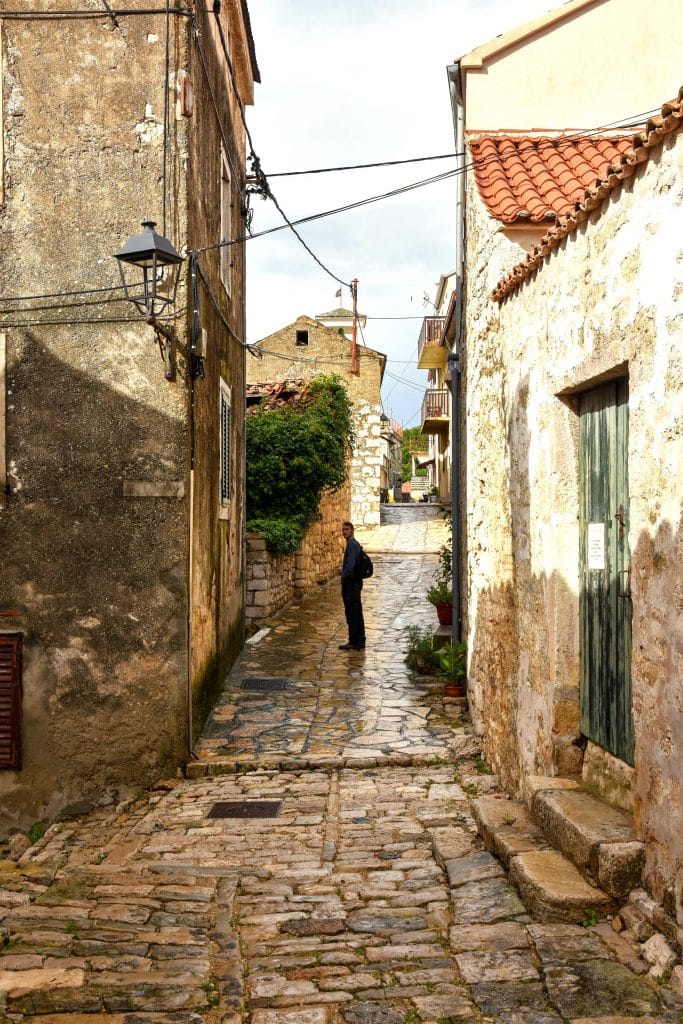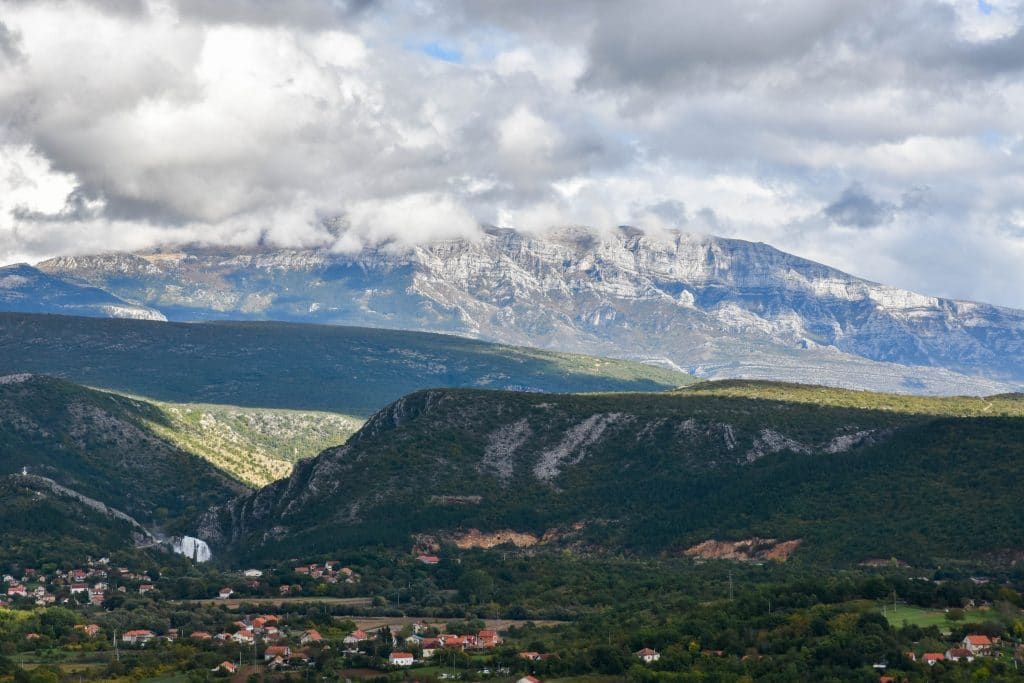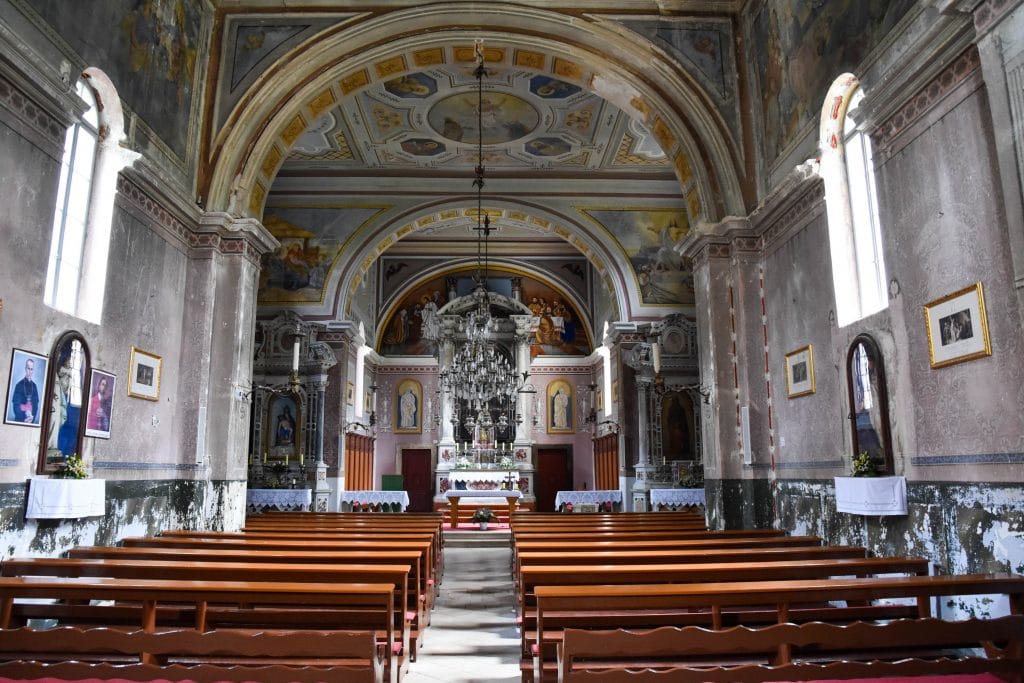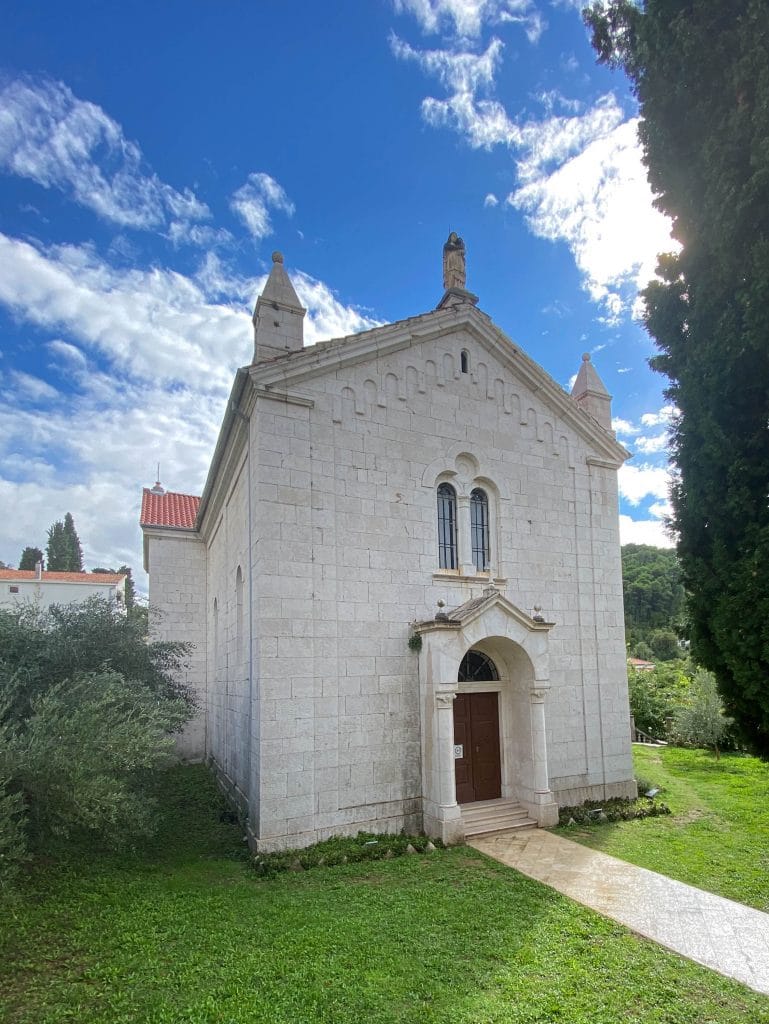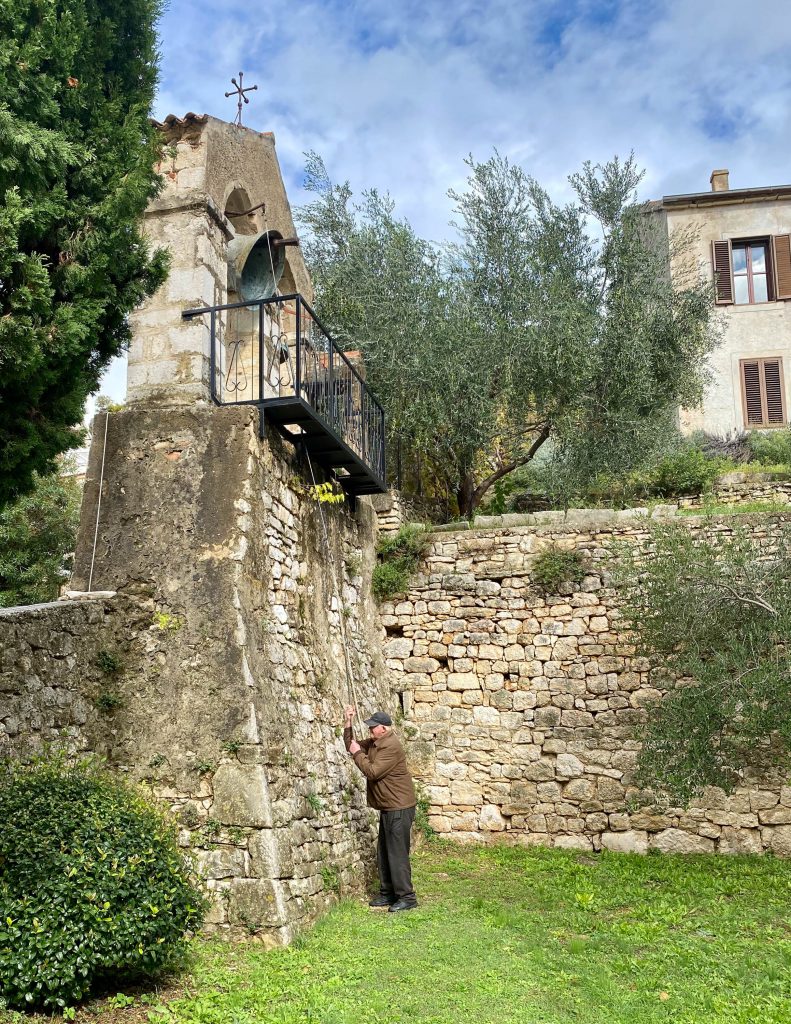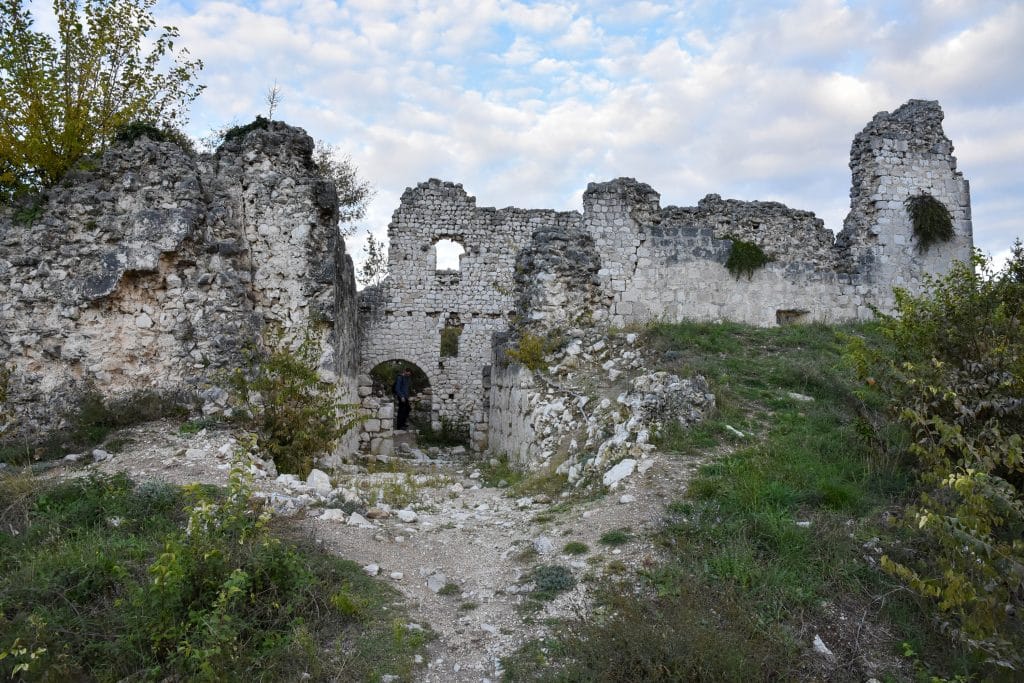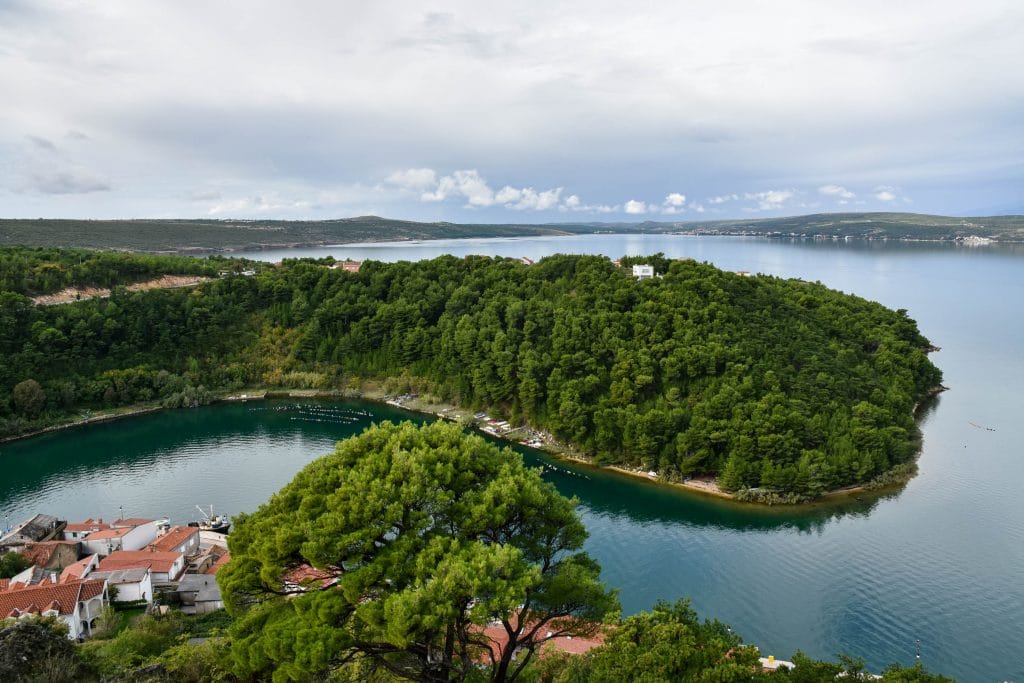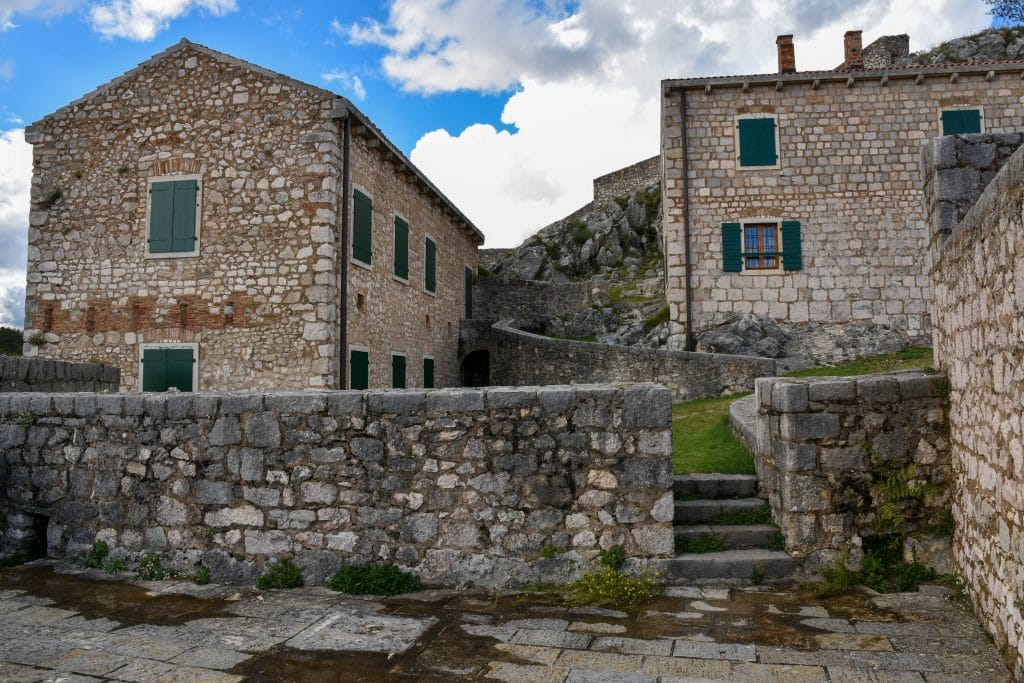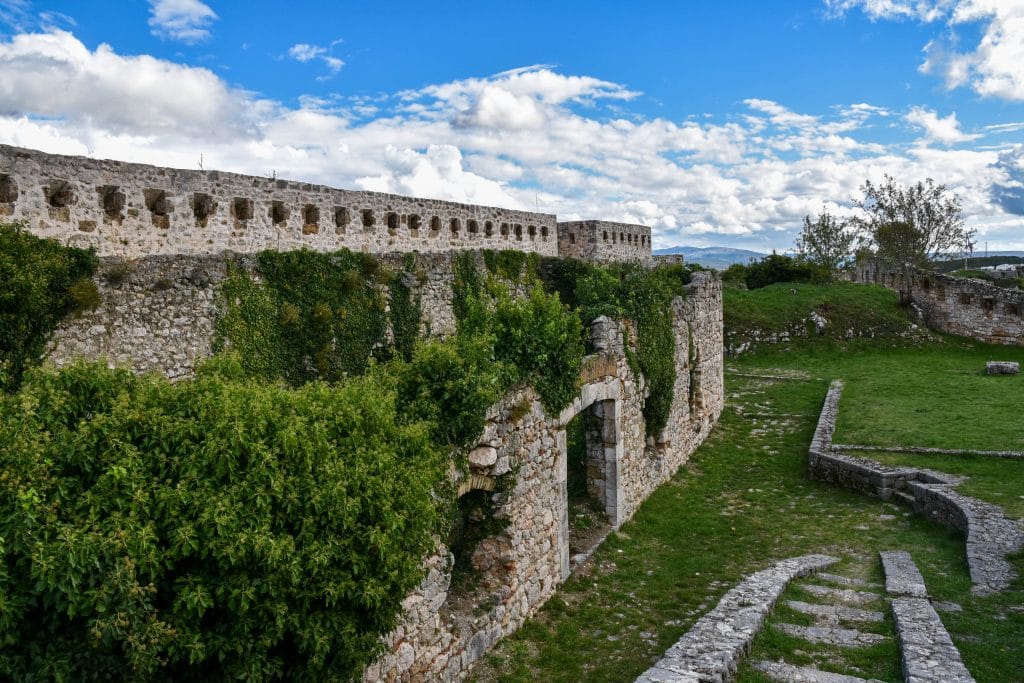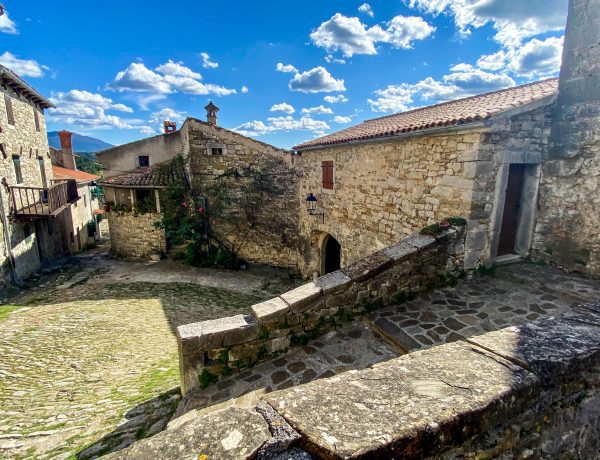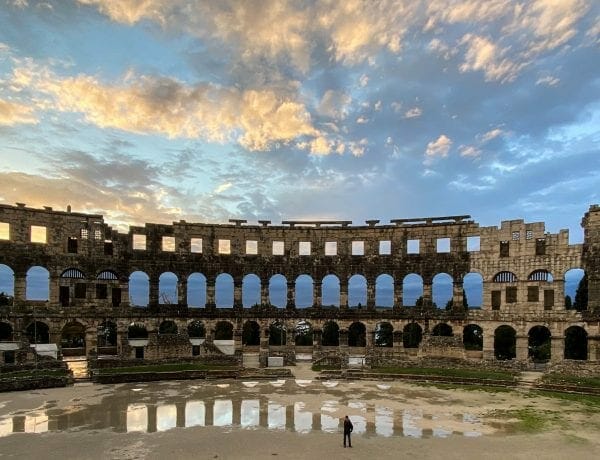“Zadar has the most beautiful sunset in the world……… applauded at every evening”
Alfred Hitchcock
Visitor Guide and Photo Gallery

If Zadar, Croatia, is calling you, start planning your visit, as it will be one of the most memorable visits of a lifetime. There are so many things to do in Zadar, Croatia. This great city has a unique and fascinating story. This 3,000-year-old settlement’s rich and turbulent history earned it recognition as a UNESCO World Heritage Site in 2017. Zadar is noted to be the oldest continuously inhabited city in Croatia. It also became the capital of the Eastern Roman Empire, also known as the Byzantine Empire. It maintained its capital status in this region of Croatia until the end of World War I.

One of the most intriguing aspects of this place is its history, literally written on the walls. The Zadar fortification walls were impenetrable and defended the city and its residents for centuries. The Croatian government restored these ancient walls in 2020 with EU funds. You can easily explore them on foot and see why they survived persistent attacks over generations.
Our visit to Croatia took us along the whole western coast of this beautiful country. Zadar was a logical stop and, as a result, became one of our favorite cities in Croatia. Let us introduce you to this beautiful coastal town in more detail.
Where is Zadar, Croatia?
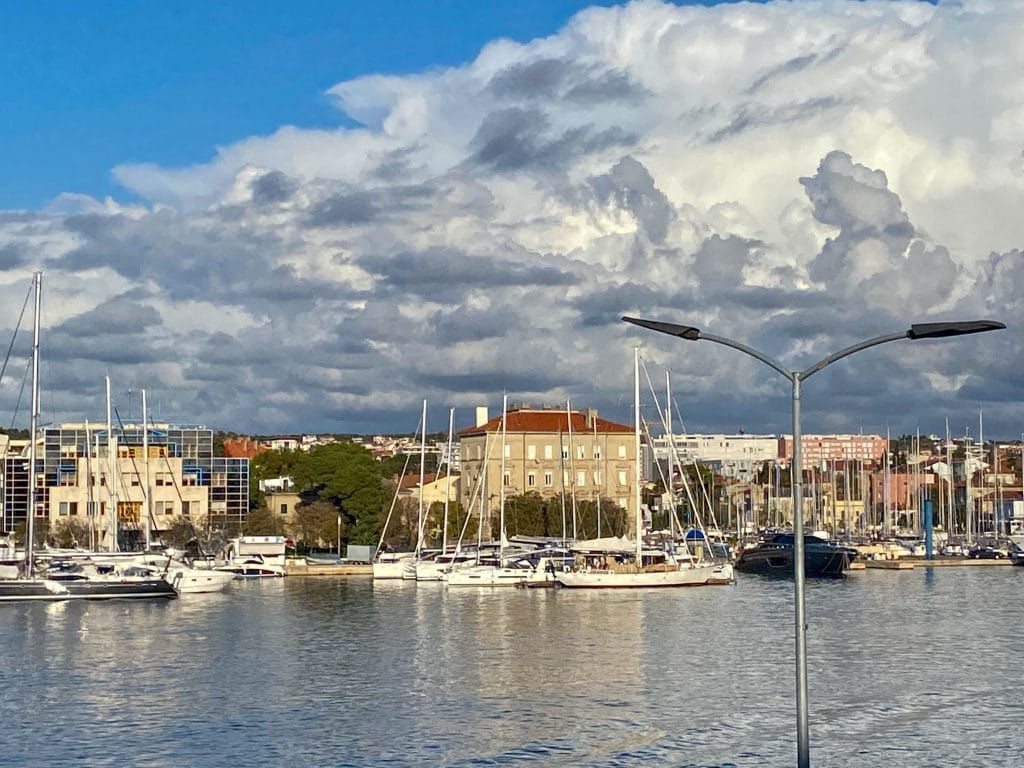
Zadar is situated on the Adriatic Sea in the northwestern part of the Ravni Kotari region. The city serves as the seat of Zadar County. It sits in the northernmost region of Dalmatia. It is about 1 and 40 minutes north of Split and about three hours southwest of Zagreb.
The city proper covers about ten sq mi with a population of about 75,000, making it the second-largest city in the Dalmatia region and the country’s fifth-largest city.
Map of Zadar, Croatia
History of Zadar Croatia

Zadar is a city whose past goes back 3,000 years to when it was first mentioned as a settlement in written documents. It became a fully urbanized center during ancient Roman times and has remained continuously occupied for another two millennia. Zadar is one of the most important cities on the Eastern Adriatic coast. Over its long timeline, it has been a destination for adventurers, poets, scholars, and writers. With every step, its streets, squares, seafront, churches, and monumental heritage unveil its ancient history.
Prehistorical Findings
The material remains of human existence and its culture in the region of Zadar date back to the late Stone Age—settlements of Puntamika and Arbanasi on Zadar land date from the late Neolithic era. The present-day residents of Zadar still pride themselves on their resilience and grit.
Liburnians
As a Liburnian settlement, Zadar had already become a significant center and harbor for numerous trading voyages two thousand seven hundred years ago. The Liburnians were skillful in trading and navigation during the Iron Age. As notorious seamen, the Liburnians later became the leading builders of the future Roman Empire Armada that controlled the Mediterranean.
Roman Empire
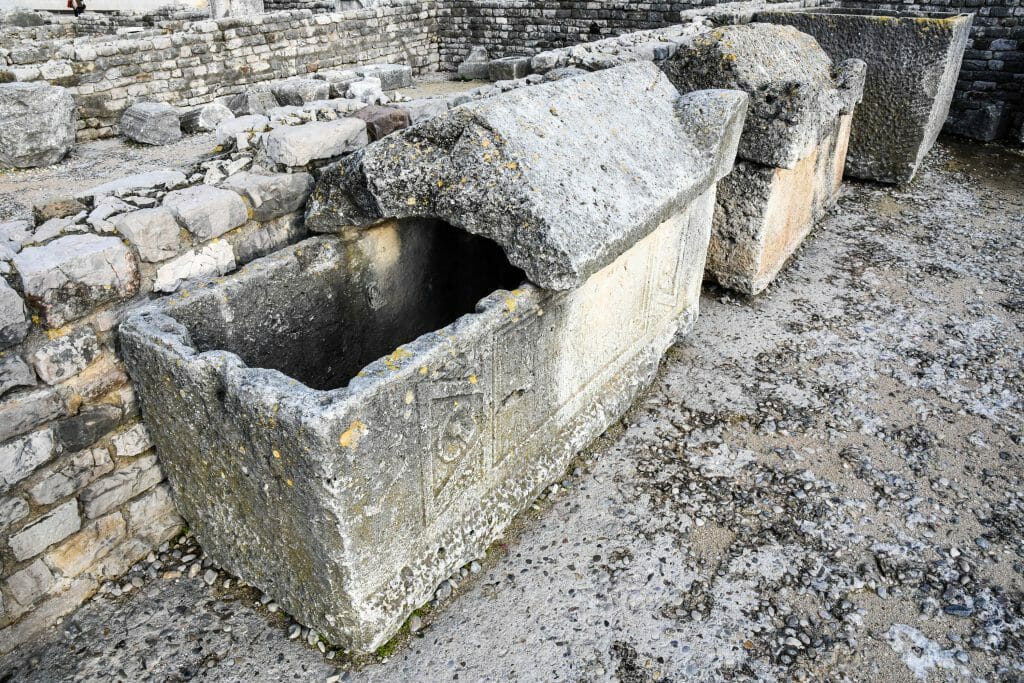
The union with Rome prevented the Liburnians from losing land within the Northern Dalmatia territory and gave their ancient settlement, Zadar, a solid base as a city. During the Empire, Zadar was built and urbanized throughout the entire period of Late Antiquity and Middle Ages. Until the beginning of World War I, it remained the center of the Eastern Adriatic.
Middle Ages
Zadar became the most significant Dalmatian free commune and center of Dalmatia in the Byzantine Empire. It was just as powerful and advanced as Venice. The Croatian war elite of the time controlled the wider Zadar area, towns, and Adriatic islands to the broadest extent. At the end of the 14th century, the Dominicans founded the first University on Croatian territory.
Zadar Under the Republic of Venice
From the 11th until the 14th century, Zadar’s dukes had endless wars with the Republic of Venice, which did not accept Zadar as a significant and influential trading competitor. The Croatian king Petar Krešimir IV annexed the city of Zadar and the Dalmatian municipalities in 1069. Zadar still belonged to the Kingdom of Naples and the Holy Roman Empire until 1409, when Zadar and Dalmatia were sold to the Republic of Venice for 100 thousand ducats. During the 16th and 17th centuries, there was growing danger from the Ottoman Empire. With the construction of the new fortress and fortified wall that significantly changed the city’s appearance, Zadar soon became the biggest city-fortress in the Republic of Venice. Its defense system is recognized on UNESCO’s World Heritage List.
Napoleonic Wars and Austrian Rule
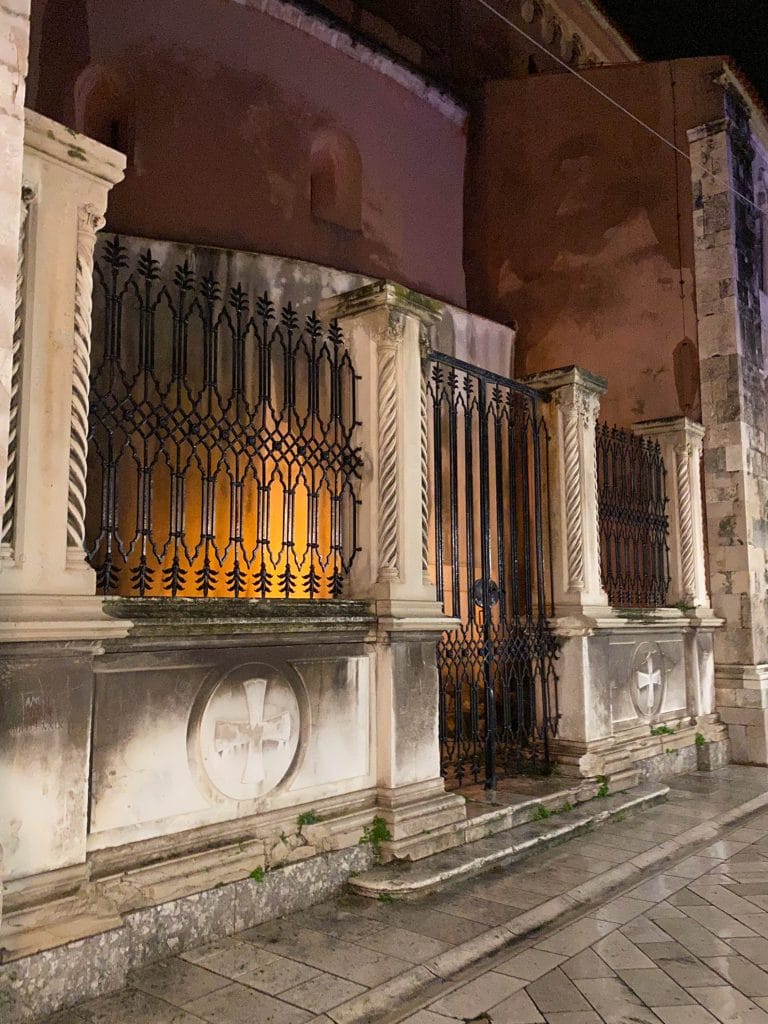
With the fall of Venice in the 18th century, Zadar was annexed to Austria. Shortly after that, in 1806, Zadar came under the authority of Napoleonic France. During only seven years of rule over Zadar and Dalmatia within French Illyrian Provinces, the French modernized the region. Zadar University was re-established with the Faculty of Medicine, Pharmaceutical Studies, Law, and Construction. After the fall of Napoleon and the siege of Zadar in 1813, the Austrian army entered the city again. The second Austrian rule over Zadar lasted until 1918, at the end of the First World War.
Yugoslav Period
The Austro-Hungarian Monarchy broke down in 1918. As a result, in 1920, Zadar was annexed to Italy as an enclave on the Eastern coast of the Adriatic. At the end of the Second World War, Zadar again became part of Yugoslavia. During the Yugoslav period, Zadar was entirely rebuilt because it suffered severe bombings during World War II in 1943 and 1944 when nearly the entire historic center was destroyed. Zadar again became a powerful cultural and economic center of the region.
Modern Zadar
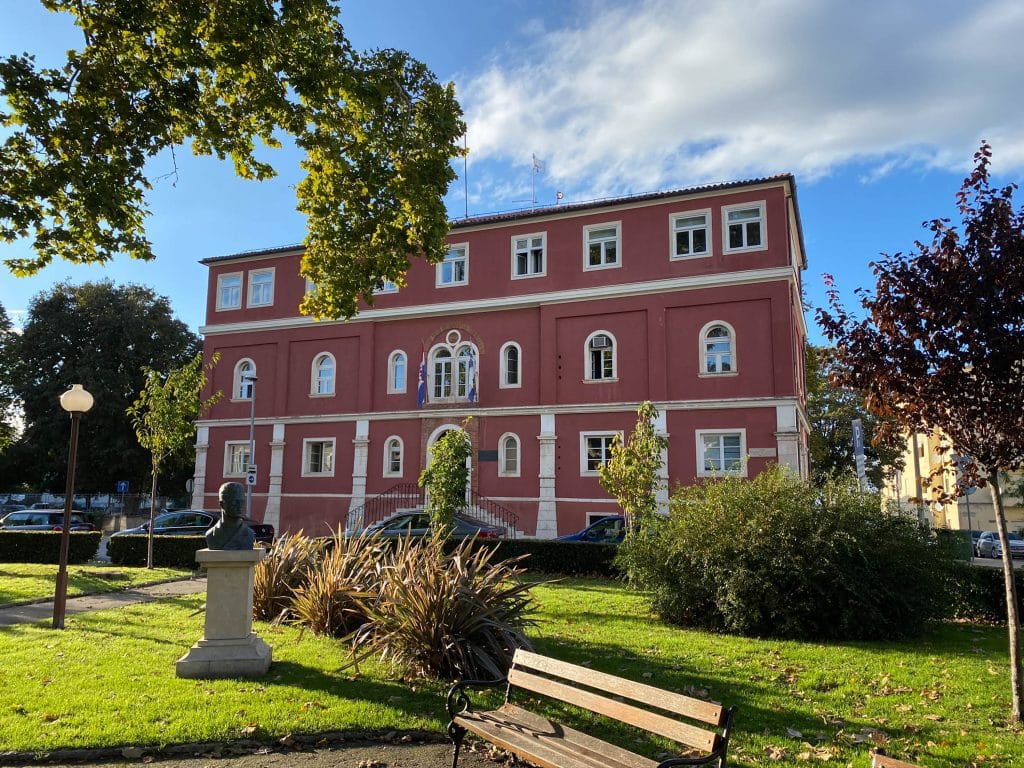
Since 1991, Zadar has been part of the Republic of Croatia. After declaring independence from the Socialist Federal Republic of Yugoslavia, Zadar has once again become the center of the Zadar County region. During the 30-year period, the city prioritized building new community infrastructure and a big modern port. It established Zadar University.
Zadar connects to Zagreb by one of the best and most scenic highways we have driven in Europe. It has a busy airport, which connects it to all of Europe. Zadar is a city of students, a dynamic and bustling urban center with around 75,000 residents.
Zadar Croatia Fun Facts

Under Venetian rule in the 15th century, Zadar was the largest fortified city in Croatia.
The main street in Zadar is named Široka Ulica (široka = ‘wide’) and is the city’s heart. It is believed it’s as old, or even older than the city itself. The Zadrans, however, refer to it by its historical name, Kalelarga.
Zadar’s history isn’t just written on portions of its walls. In fact, every street is alive with history. For example, near the waterfront, you can see the ruins of the 6th-century major earthquake. You can also wander the 2,000-year-old city’s central meeting place, which the Romans used.
Zadar is also famous for its architecture, most of which was influenced by Roman times. Today, many gates, towers, and city walls can be visited. There are also some monasteries and churches in the old town.
It is one of those cities in Croatia which you can enjoy without large crowds. Most travelers, especially Americans, have not yet discovered this incredible city. The natural beauty of Zadar and the surrounding area is still relatively undiscovered. For that reason, the price point is less expensive here compared to other cities along the Dalmatia Coast.
Did you know?
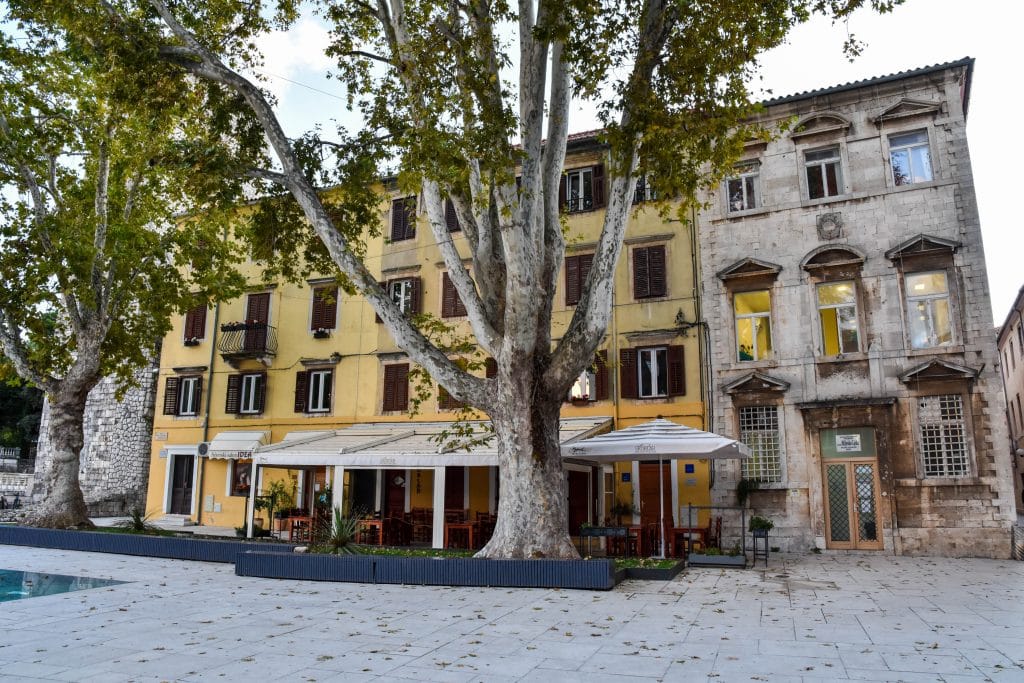
Forget the NBA; it’s here where you will find the true fans of the game. So much so that their motto is ‘God may have created a man, but Zadar created basketball. It’s the number one sport, the pride of the city.
If you want to witness a breathtaking sunset, this is the place you need to be. According to a famous movie director, Alfred Hitchcock, it has the most beautiful sunset in the world, particularly next to the Sea Organ. When you sit by the Sea Organ, you not only enjoy the flaming, amber sky but also relish the pleasant musical sounds generated by the waves.
If you are staying in Zadar, you should know that you are in an area rich in natural beauty and near four beautiful national parks. Croatia has eight national parks and four here, making Zadar even more intriguing. Croatia is among the ecologically best-preserved parts of Europe since 10% of the country is protected.
Zadar offers extraordinary local cuisine. In other words, you can call it Croatia’s Culinary heart. It has everything from local seafood to slow-cooked lamb in mountain herbs to satisfy your taste buds. We were so enamored with Croatian cuisine that we dedicated a blog post to it. Check out our Croatia Cuisine post here.
Top 9 Things to Do in Zadar, Croatia
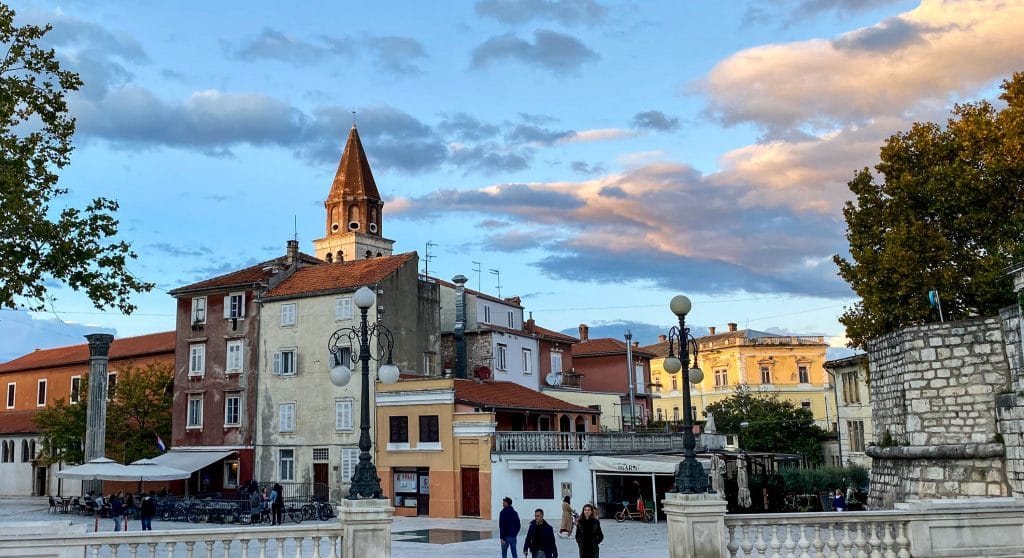
If you want to plan your independent adventure, here are the top 10 things you can do in Zadar to immerse yourself in the culture and make your trip more meaningful.
1. A highlight of Zadar is the Land City Gate on Fosa Harbor. This gate is one of the finest monuments in Croatia, as it served as the main entrance to the city in 1543. It is a fine piece of Venetian architecture decorated with sculptures.
2. Drop by Roman Square, founded in the middle of the 1st century BCE as a colony in which Roman veterans settled. You can look closely at the numerous excavated remains of Roman buildings, inscriptions, and others set on the lawns. Here, you will find locals and their children playing in the square among these Roman ruins as if they were a playground. Grab an ice cream cone, and enjoy the delightful setting.
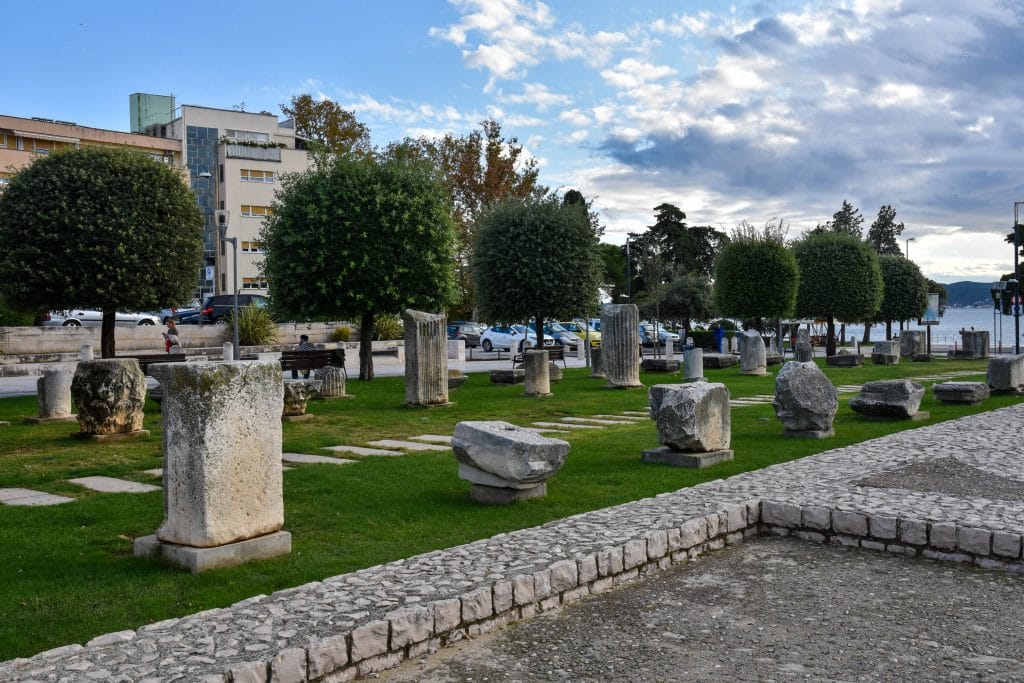
3. Drop by the Park of Queen Jelena, one of the city’s oldest parks. It was interestingly founded by the Austrian commander, Governor Baron Franz Ludwig von Welden, in the area of military fortifications. Governor Van Walden was a great lover of nature and interested in botany, particularly Dalmatian flora. During his service in Zadar, he collected plant characteristics of the region to set up extensive lush green gardens.
4. See Five Wells Square, especially at night when it lights up from below. It was built in 1574 during the siege of the Ottoman Empire army when the defensive moat on the west side of the bastion was covered up. In its place, a large cistern for drinking water with five decorated wellheads was built, and parts of the aqueduct that used to bring water directly from the Vrana Lake have been preserved.
Museums
5. Visit the Museum of Ancient Glass, which has a vast range of Roman glassware. Its display presents a unique collection of over 5000 glass objects dating to antiquity, i.e., from the 1st century BC to the 5th century AD. Over 1500 complete glass objects are presented in the permanent display divided into eight thematic wholes. The museum is located in the renewed historic palace of the Cosmacendi family, dating to the second half of the 19th century.
6. Take in the Archaeological Museum, another excellent place for those who love history. It displays prehistoric archaeological material from the Old and New Stone Ages (Paleolithic and Neolithic) and the Metal Ages (Bronze and Iron Ages). It also has relics from the Roman and Byzantine Periods.
Modern Displays and Nightlife
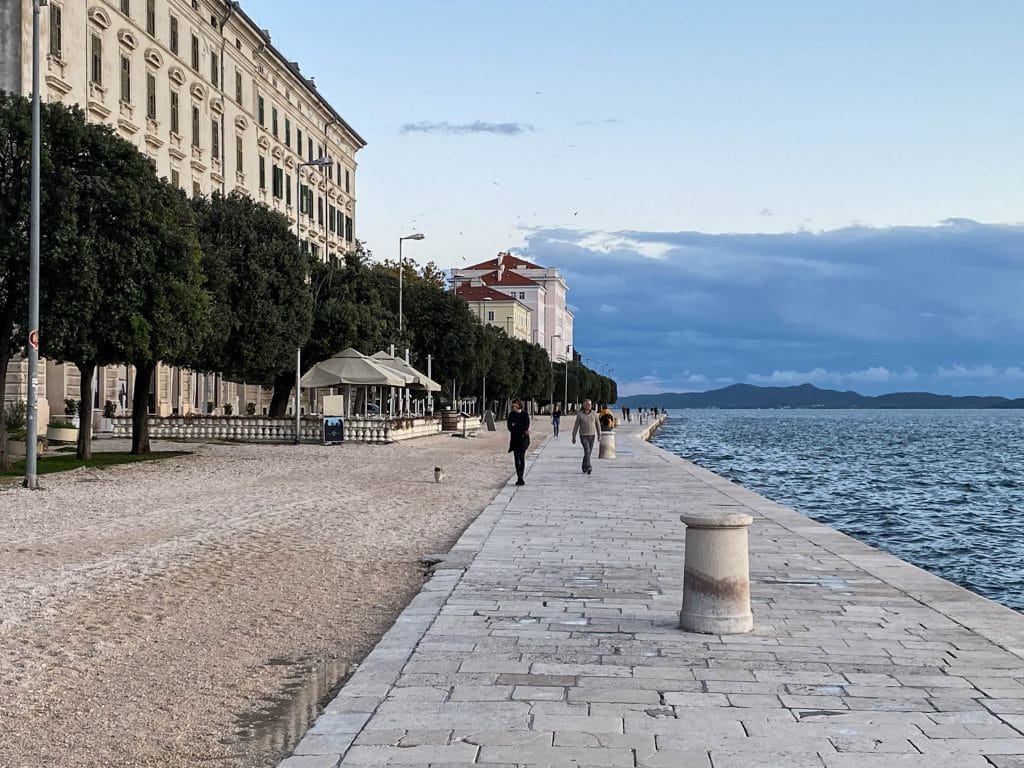
7. Stroll the exquisite promenade along the waterfront of Zadar’s Old Town. Toward the end of the promenade, you will come across the Sea Organ art installation that creates musical notes on marble steps. The soothing sound of waves takes you to another dimension when they reach the 210-foot-long promenade steps that form the Sea Organ. ‘The Orchestra of Nature’ then plays unique tunes on the 35 pipes of different lengths & diameters underneath the steps. The pipes are tuned to play seven chords of 5 tones based on the matrix of traditional Dalmatia klapa songs.
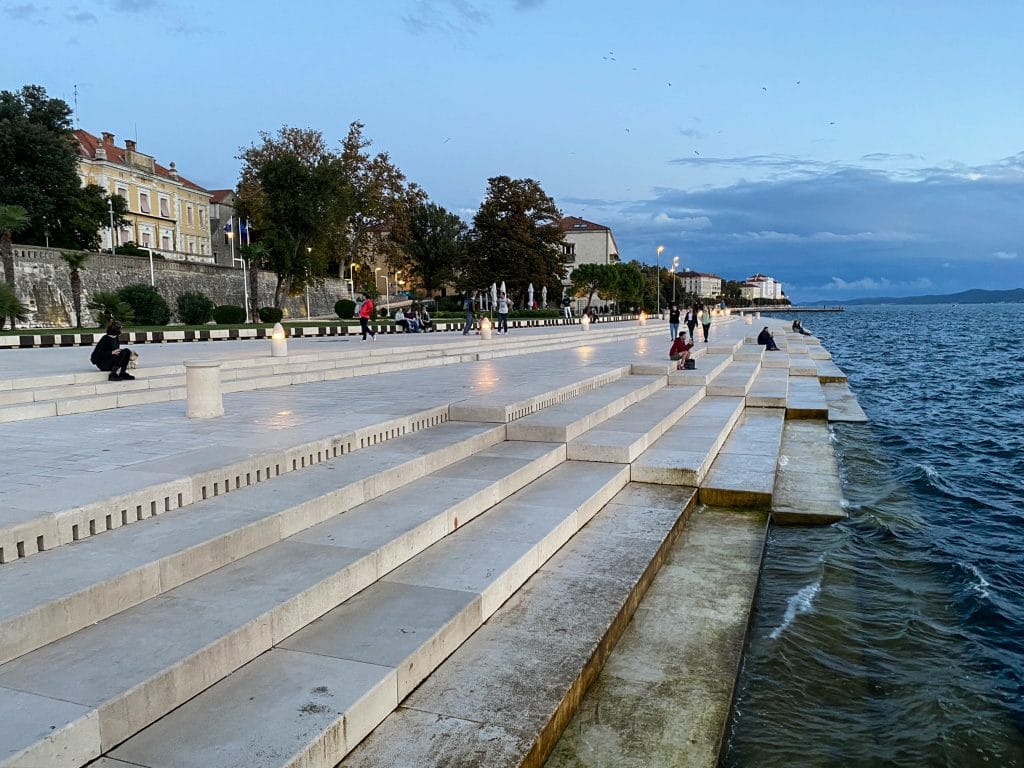
8. Dance on the giant, solar-powered Greeting to the Sun on the famous Zadar promenade. Renewable, energy-efficient, and, most importantly, breathtaking captured our attention immediately. Three hundred multi-layered glass plates form the Greeting to the Sun on the Zadar’s waterfront. Underneath the glass plates, there are solar modules, which are responsible for the fantastic light display that happens at sunset. Apart from the impressive light show, Greeting to the Sun, believe it or not, is a power plant that transforms solar energy into electricity used for public lights along the entire promenade.
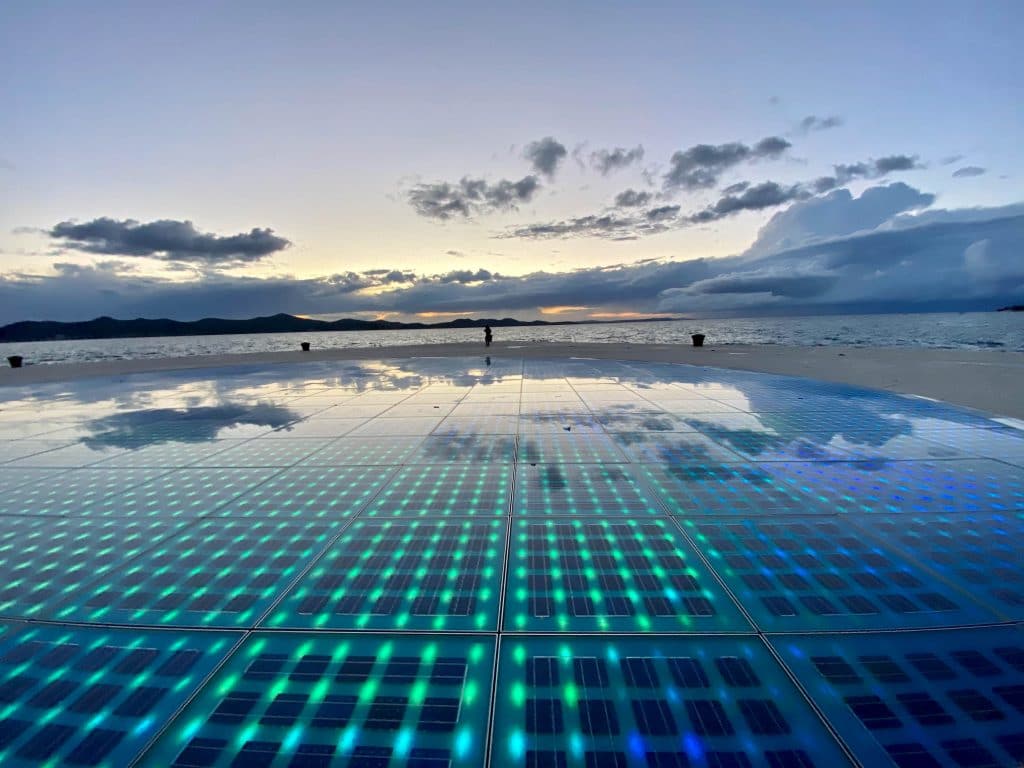
9. Attend the popular dance parties in the city and enjoy the many night events. Zadar is a city with quite a busy nightclub scene. As we strolled late at night, the dance and party scene was hard not to miss. The partiers were all dressed up and living life. From what we could see, there were many choices, and we were there in the off-season.
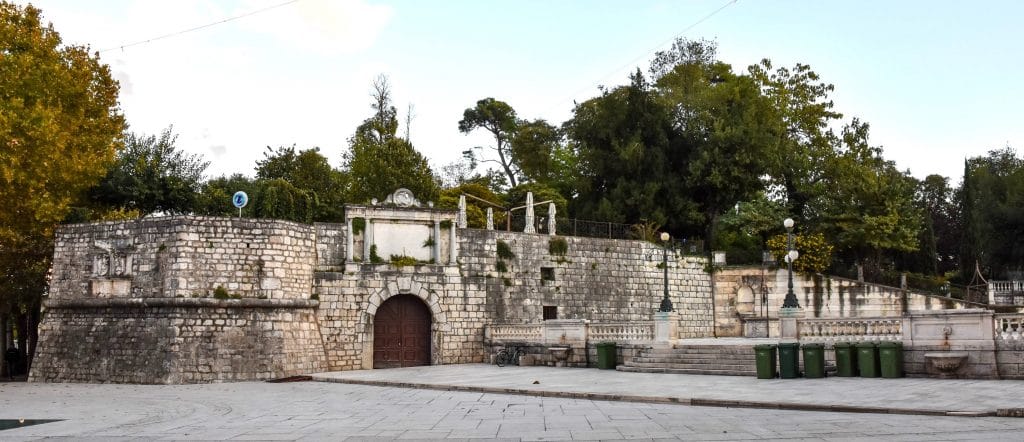
If you prefer a tailor-made trip, you can contact the local expert, who can make your entire trip more memorable due to their first-hand knowledge of Zadar.
Our favorite parts of Zadar
Zadar is a place you can experience with all your senses! It is a city that blends magically ancient history with modern wonder. Zadar has so much to offer, from wandering Roman ruins to relaxing on the steps of the waterfront promenade and listening to the unique sound of nature played by the Sea Organ. Go a few steps further and take in the one-of-a-kind display of colors as the sun beautifully sets, accompanied by a light show generated by the Greeting to the Sun display. Dance amongst the colors as they illuminate the night sky.
Take a close look at the Greeting to the Sun installation, and you’ll see that it represents the solar system, with the Sun and the planets in proportionate sizes. Also, the names of Zadar’s patron saints and the dates of their feasts are carved in the ring that encircles the installation. It truly is a unique way of paying tribute to the city and nature.
Since these modern attractions were introduced, the Sea Organ in 2005 and the Greeting to the Sun in 2008, Zadar has drawn visitors worldwide. Once, only Croatians were aware of these additions, but the experience is so remarkable that its popularity keeps growing. The city now invites you to interact with nature’s core personally: the Sun and the sea. It’s the most special souvenir you can take home.
Day trips from Zadar

- Zadar’s location is ideal for basing day trips to see many of the breathtaking sights this area of Croatia offers.
- Novigrad is an isolated fishing village on a stunning bay. It is a hidden piece of perfection. Up a steep, rough path is a ruined castle/fortress. I stayed in town as Ryan climbed it. The medieval village is a step back in time with many old but well-maintained buildings. It has a quaint Harbor and several old churches.
- Knin Fortress is the second-largest hilltop military fortification in Europe. It is incredibly intact and has tremendous views. Multiple exhibitions on site are informative and moving.
- The Burnum is an area of Roman ruins that include arches, an amphitheater, archaeological sites, and a scenic lookout to the valleys and waterfalls. There are lots of hiking trails in the area.
- Vrana Castle is an abandoned castle with a simple sign in front. It is pretty huge and in ruins. It is overgrown and challenging to maneuver but fascinating. Across the street, there were historical Turkish Baths to visit.
- Visit Ravni Kotari if you love flatlands. It is a vast plain and relatively fertile area with many protected sites. The locals’ traditional way of life is witnessable here, as they religiously follow their specific customs and culture.
Nature at its best
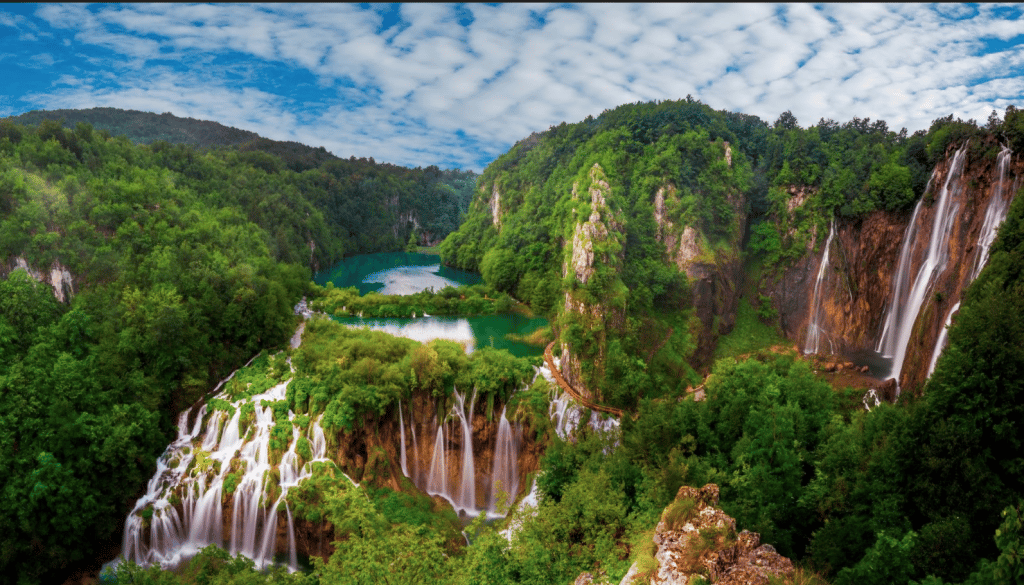
- Take a boat trip to Sakarun Beach to enjoy the sun, sea, and sand feast for the eyes. It is the best beach in the Zadar archipelago, where you can swim or snorkel in crystal-clear waters. Relax on the white sand beach, or grab a bite at one of the beach’s many restaurants.
- Croatia’s impressive Paklenica National Park (Paklenica) is just over an hour’s drive east of Zadar. It attracts professional climbers, mountain bikers, and rafters from all over. The Paklenica karst river canyon is on the southern slopes of Velebit Mountain. It contains two canyons, Mala (Small) and Velika (Big) Paklenica.
- Take a Kornati and Telašćica National Parks Boat Trip. Admire the natural beauty of the Kornati and Telašćica National Parks from the water. Enjoy a swim and explore these beautiful parks.
- Finally is the marvelous Plitvice National Park. It is 90 minutes north of the city, and if you have some time, you should visit this mesmerizing place. Spend the day in the breathtaking beauty of Croatia’s Dinaric Mountains, touring the Plitvice Lakes. Take in the terraced lakes and crystal-clear waterfalls flowing through a vast and lush environment. You will be in awe of the landscapes.
- Charter a boat on the Zadar Harbor and explore its islands. The Dalmatia Coast is as spectacular a setting as you will ever see. Zadar has many family-friendly islands that have paradisiac beauty. They relax your mind and body and give you a break from your busy life.
Are you planning a trip to Croatia? Check out our blog post, Croatia: The Enchanting Gem of the Mediterranean
How to get to Zadar, Croatia
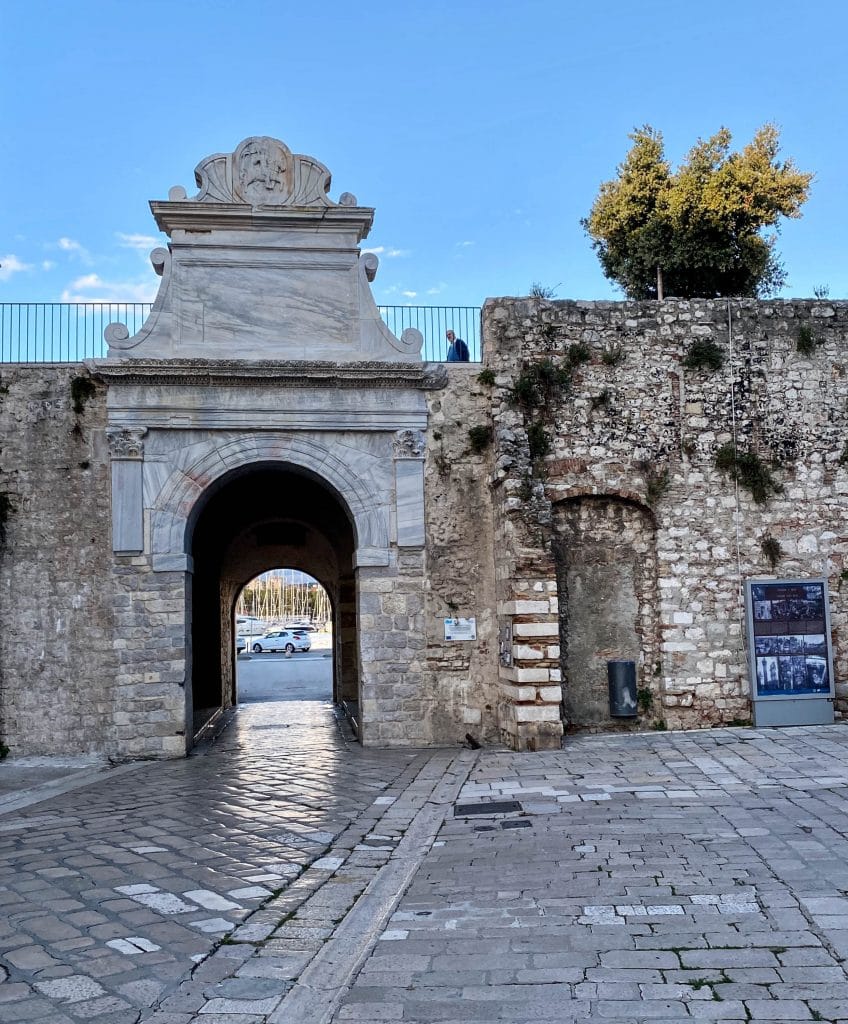
By Car
We found that Croatia may be one of the easiest countries in which to drive a car. There is so much you will miss by not renting a car. Road signage is fantastic in Croatia, and the motorways are nearly perfect. A good GPS will come in handy, as it always does. Parking was easy in the city, and our hotel at the time provided free parking.
By Plane
Zadar’s airport is only 7 miles away. Flights to Zadar are available from the UK, Ireland, and other European towns and cities.
During the summer, there are daily flights to Zadar from Croatian cities such as Zagreb and Pula. The flight time is around 45 minutes.
Buses from the airport to the main bus terminal in Zadar roughly run in conjunction with flight arrivals.
By Bus
You can look up bus timetables to and from Zadar on the Zadar Bus Terminal website. Routes are available from and to all the major towns, cities, and places in Croatia, such as Zagreb, Split, Dubrovnik, Rijeka, Sibenik, and elsewhere.
By Ferry from Italy or Within Croatia
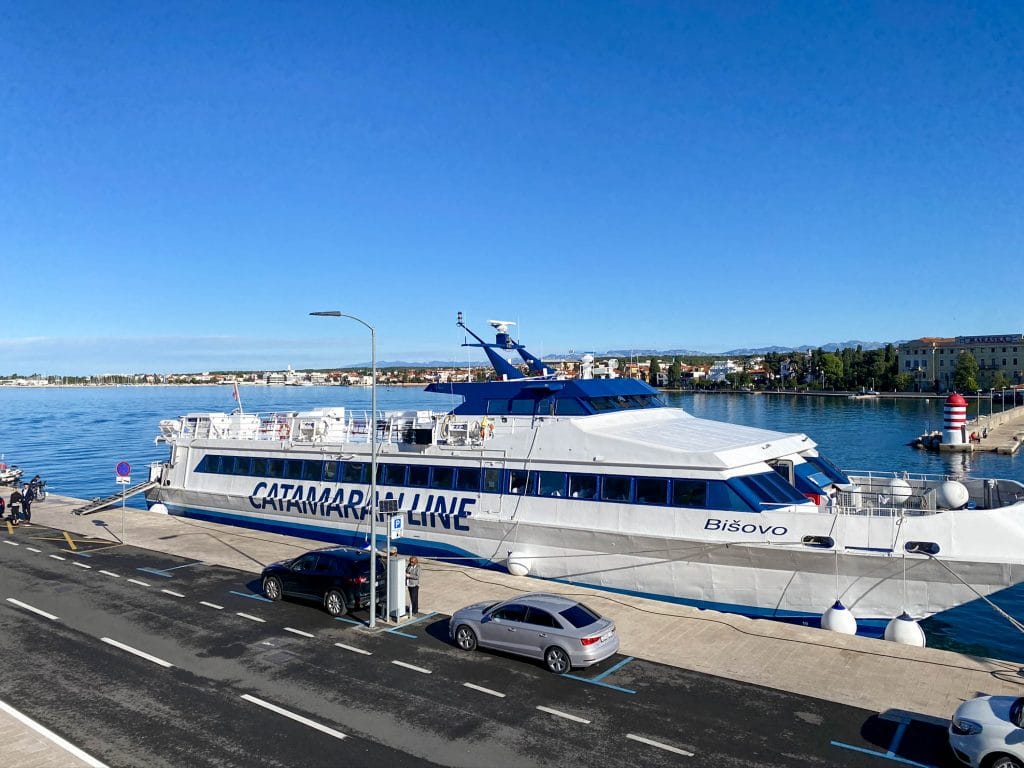
There are international ferry services to Zadar from Italy. Jadrolinija runs a nine-hour overnight ferry service from Ancona from June to late September. The ferry runs near-daily in August and fewer times per week during the other months.
Jadrolinija runs year-round (and frequent) local ferry routes to and from many of the islands close to Zadar, including Ugljan, Dugi Otok, Rava, Silba, Olib, and the island of Mali Losinj, which is further north.
G & V Iadera runs a new (summer-only) service connecting Zadar with Rijeka, stopping at Silba, Lopar (Rab), and Krk Town along the way.
Kapetan Luka offers a year-round catamaran service, though less in the off-season, that sails from Pula to Zadar, stopping at Unije, Susak, Mali Losinj, Ilovik, and Silba en route.
By Train
There are also a couple of trains a day to Zagreb, and the journey time is 7 to 9 hours. We wouldn’t recommend traveling by train to Zadar, as the bus is faster!
Dining in Zadar
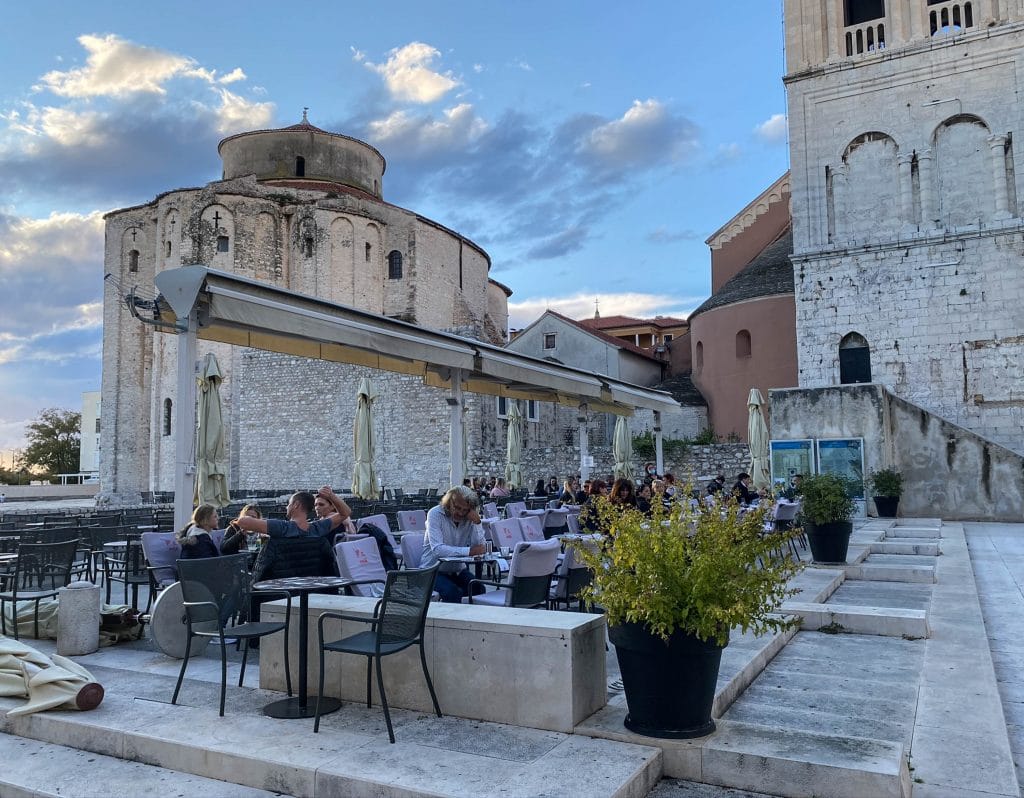
On our first night, the hotel suggested a restaurant called Kornat. It was the perfect setting near our hotel and on the water. If weather permits, it has a bright, elegant dining room with an outdoor area. It was quiet when we visited, leading to an exceptional evening with top-tiered service and an outstanding multi-course chef-designed menu. The presentation of each dish was intricate and artistic. Everything we had was delicious. It was one of our splurges on the trip, and it was worth every penny!
Zadar has a wide selection of restaurants with a wide variety of cuisines. With the strong Italian influence, pizza can be found throughout Zadar. Other top recommendations for restaurants include:
- Karoca Gre offers traditional Mediterranean cuisine from the Zadar and Dalmatia region.
- Kaštel restaurant is part of the Bastion Hotel where we stayed, situated in a 13th-century fortress! It is upscale and well-reviewed but quite pricey.
- Tinel is a restaurant that values the importance of family and has a laid-back atmosphere. It imparts warmth and is homey and relaxed.
Where to stay in Zadar, Croatia

Zadar, Croatia, is a pretty small city. However, it has many accommodation options. There are hotels along the cost spectrum, vacation rentals, and private room hostels. There is a place to stay that will complement any budget.
We recommend staying within the city walls. It will save a lot of time, as the city center has the largest concentration of attractions and historic buildings. That is also where some of the best restaurants and nightlife can be found. It is a walking city, and it would be ideal to place yourself where you can take advantage of the location. We walked late at night and always felt safe.

We stayed in Heritage Hotel Bastion- Relais & Chateaux and found it quite lovely and ideally located. It is next to the sea and sits at one of the gates to enter the walled city. It is elegant, modern, and has a warm décor. We loved its quick access to the Sea organ and Greeting to the Sun; therefore, we were able to visit many times. It has many celebrity guest pictures on the wall.
It is important to price out accommodations on various sites. Expedia is a US-based company, whereas Booking.com is Europe-based. Not all properties appear on both, so it is ideal to check both out. Our personal first choice is Booking.com. If the establishment has a website, check the price there as well. Click the link below to check out hotels and vacation homes in the area. It may be just the motivation you need to start planning that next grand adventure.
When To Visit Zadar and How Long to Stay

The city has a mixture of Mediterranean and subtropical climates. It also has wet and mild winters. When it comes to the summer season, Zadar gets very warm. The hottest months are between July and August. It can reach well into the 90s.
Ideally, the best time to visit is between May and July and September/October. These months have pleasant temperatures, and you enjoy low rainfall, too. In our case, we like to travel in the shoulder season to avoid crowds. We visited in late October and found the weather perfect, although it sometimes did rain.
If possible, avoid August since it is the busiest month and has the peak visitor numbers. Zadar draws many European visitors, and most Europeans vacation in August. It won’t be possible for you to enjoy the city’s charms.
Our most substantial suggestion is don’t treat this place as an afternoon stopping point. We stayed here for two nights, and it wasn’t near enough. It is not just because of what the city has to offer but also because of all the fun places to visit in the general region of Zadar, Croatia.
Final Thoughts
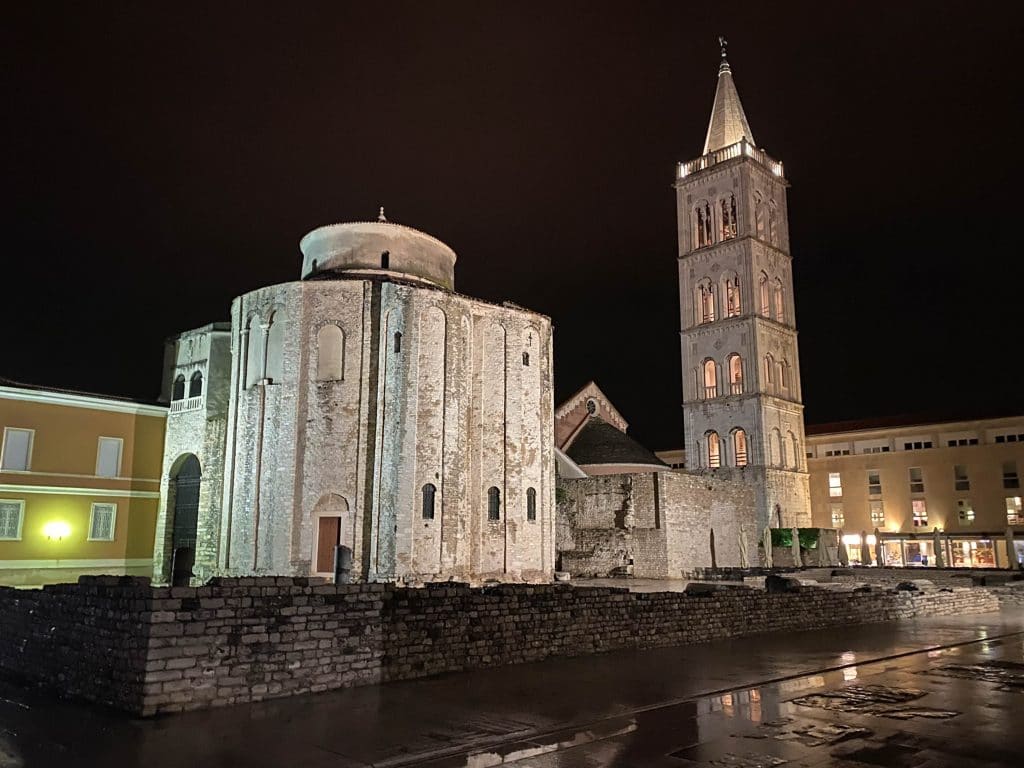
Croatia was a one-country trip that was not part of our original plans. It was to be a two-day stop in a multi-country adventure. Covid had other plans for us, and we adjusted and spent two weeks here in this mind-blowing country. We could not be more thankful for the opportunity to explore this wonder in more depth. It captured our hearts over and over again. Zadar was one of the highlights of our near-perfect trip.
Zadar is the complete package to absorb human history, explore fantastic natural attractions, and enjoy delicious cuisine. It is full of warm and welcoming residents that will bring so much more to your travels. You can even call it the ideal honeymoon spot because of its natural pools, world-class beaches, crystal turquoise waters, and gorgeous waterfalls. Once you visit this piece of heaven, you will fall in love with it as we did. Do so soon, though, because it is growing in popularity every year.
© 2025 Wanderers Compass All Rights Reserved
If you want more inspiration and to visit other parts of Croatia, check out our Croatia Travel Guide. It will help you plan your dream trip.
Zadar Croatia Photo Gallery

















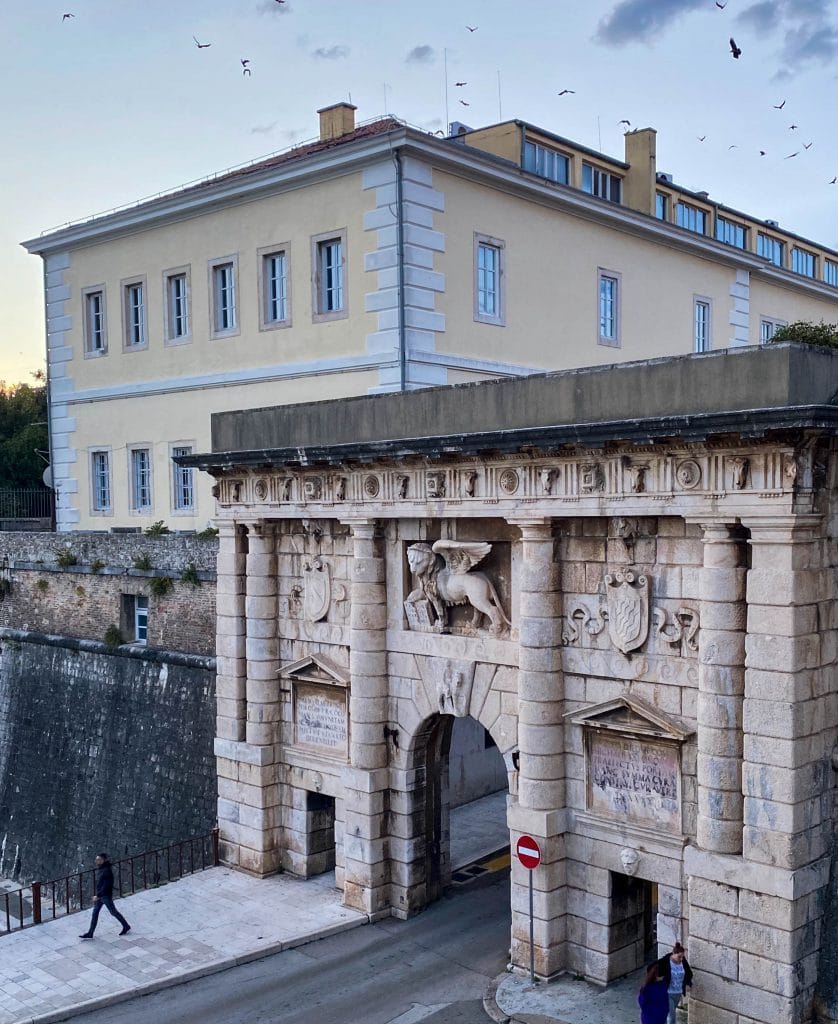


















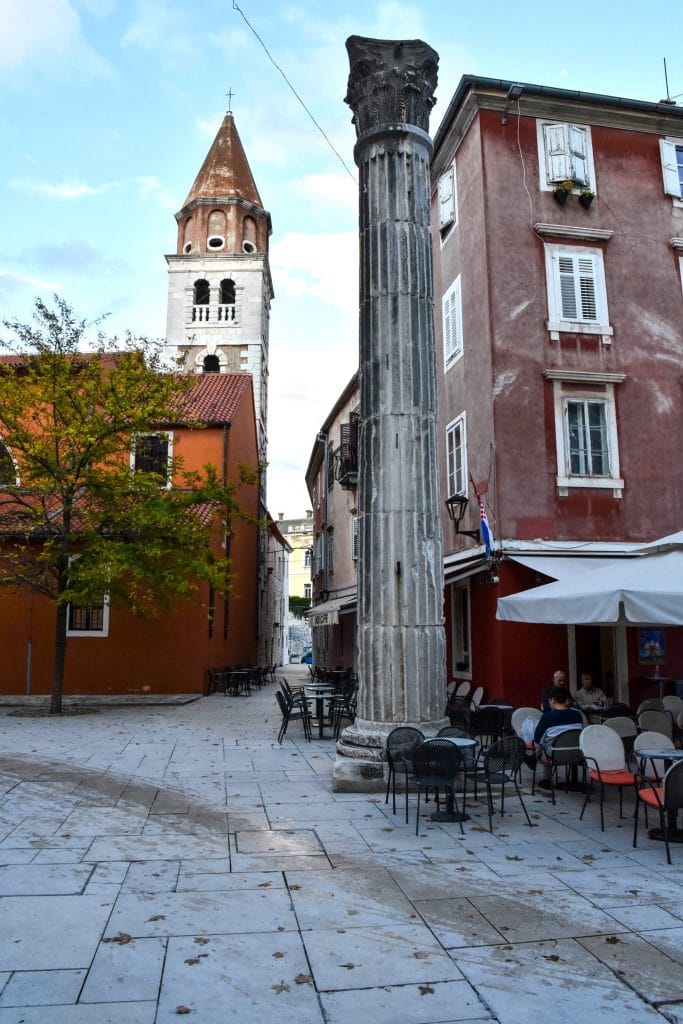
Check out the official tourism site for Zadar, Croatia
Check out all our Croatia Posts to learn about this beautiful country
Croatian Cuisine: A Travelers Culinary Wonder
Croatia food was one of the highlights of our trip. We take you on…
March 14, 2021Hum, Croatia: The Smallest of Treasures
Hum, Croatia, a mini near-perfect medieval hill town, has been penned the smallest city…
August 3, 2021Top 5 European Destinations: Ideal Living Spots for Remote Workers
As part of our guest writers series, we are pleased to welcome Cody Journeyman,…
September 11, 2023Croatia: The Enchanting Gem of the Mediterranean
Croatia is the hidden gem of Europe on the gorgeous Adriatic Sea. Discover this…
November 15, 2023Uncover the Hidden Gem of Pula Croatia
Ancient ruins, a bustling vibrant city, and a magnificent coastline, Pula has it all.
January 10, 2024Novigrad on the Dalmatia Coast – A Piece of Croatia Heaven
Located in Zadar County along the Dalmatia Coast, this medieval village will capture your…
March 28, 2024Want to learn about Wanderers Compass?
Our Top Recommended Travel Products
Travel Insurance
Squaremouth.com
Our favorite travel insurance site!
We strongly advocate for comprehensive travel insurance, not only for minor inconveniences but also for major, unexpected events like medical emergencies. We never leave home without it. Our go-to resource is Squaremouth.com. which offers a user-friendly platform that connects you with top-rated, reputable insurance carriers. Plus, they’ll mediate on your behalf if you run into any issues.
To empower you as a consumer, we recommend you read our blog post on why travel insurance is essential and how to secure the best coverage from leading companies at an affordable price.
MedjetAssist
Medical transport back home from anywhere in the world
Medjet is a leading provider of global air medical transport. Unlike traditional travel insurance, which typically covers medical evacuation to the nearest facility, Medjet goes further by ensuring you’re transported back to the U.S. to the hospital of your choice once you’re stable enough to fly. Medjet offers membership plans that focus on medical transport, while Medjet Horizon provides expanded coverage for broader protection. Individual trip policies start at just $99, and annual policies are available for around $300. Most policies have an age limit of 74.
To learn more about how Medical Evacuation membership with Medjet Assist works, check out our blog post for a more detailed review.
Accommodations and Airfare
Booking.com
Hotels, Home rentals, BNBs, Flights, and other Transportation & Tours
Booking.com connects millions of travelers to unforgettable experiences, a wide range of transportation options, and incredible places to stay—from homes to hotels and beyond. As one of the world’s largest travel marketplaces, it supports well-known brands and entrepreneurs of all sizes. For its convenience, variety, and reliability, it’s our preferred booking platform.
Transportation
Expedia and VRBO
Hotels, home rentals, BNBs, flights, and other transportation & tours
Expedia is a U.S.-based company with a mission to make global travel accessible to everyone, everywhere. At Wanderers Compass, we embrace independent travel, and platforms like Expedia are essential to making that a reality. Expedia allows you to book every aspect of your trip—from flights and accommodations to rental cars, cruises, and activities—making it a one-stop shop for all your travel needs.
Daytrip
Personalized city-to-city private car transfer service
Daytrip provides an affordable private car service for city-to-city transfers worldwide, and we absolutely love their service. It’s a cost-effective alternative to renting a car, providing comfortable, stress-free travel with the bonus of scenic stops along the way. For example, we used Daytrip for travel between Budapest and Vienna, enjoying some fantastic detours to local attractions. With professional drivers and customizable routes, Daytrip ensures a smooth ride while allowing you to explore hidden gems and unique sights along your journey.
To learn more about how Daytrip, check out our blog post for a more detailed review.
Travel Experiences
Viator
The leading marketplace for travel experiences
Viator believes that travel is all about creating unforgettable memories. With over 300,000 experiences to choose from—ranging from simple tours to extreme adventures, plus a wide array of unique, niche activities—it’s never been easier to make lasting memories. We frequently use Viator during our travels and especially appreciate their flexible cancellation policy, which adds peace of mind to every booking.
Communication products for seamless connectivity overseas
GigSky International eSIM Data Plans
Local Prices. No Roaming. Fastest Networks.
GigSky eSIM effortlessly connects travelers around the globe, eliminating the need to swap physical SIM cards or deal with surprise roaming charges. With affordable data plans and instant activation, you can enjoy reliable internet access in over 190 countries, making your travel experience more convenient than ever. Plus, they offer a fantastic deal: a free 100 MB data plan with no credit card required. They are so confident that you will love their service!
Enjoy 10% off all GigSky Plans (except cruise and inflight) with our discount code WCOMPASS10.
To learn more about how GigSky works, check out our blog post for a more detailed review.
Shopping
Wanderers Compass Amazon Storefront
An excellent source for all travel essentials and guides that we have vetted ourselves
Amazon is one of the world’s most comprehensive online shopping platforms, offering lower prices, a wide selection, and fast delivery through teams worldwide.
This page contains affiliate links. When you purchase through these links, we may earn a small commission at no extra cost to you. Thank you for your ongoing support!
Do you have a question for us or have a comment?
Check out our most recent blog posts
View AllPresidio: Exploring San Francisco’s Iconic Park
Uncover the charm of the Presidio in San Francisco. This unique park offers a…
April 22, 2025Airline Elite Status Match: A Travel Hack
used my Alaska Airlines MVP status to match into United Gold, and within one…
April 21, 2025Tavira Portugal: Suberb Mix of Tradition & Nature
Uncover the beauty of Tavira, Portugal. Experience its blend of history, authentic culture, and…
April 12, 2025Easter Island: Beyond the Moai
Discover the magic of Easter Island in our latest feature for Food, Wine, and…
April 3, 2025Eze France: Medieval Splendor
Charming Eze, France, is a picturesque hilltop medieval village renowned for its breathtaking panoramic…
April 1, 2025Traveling with Accessibility Challenges: A Lesson in Resilience and Discovery
Traveling with a disability taught me valuable lessons about patience, resilience, and the importance…
March 24, 2025Siena Italy: A Medieval Wonderment
Explore the medieval city of Siena, Italy – a gem in Tuscany. Become captivated…
March 22, 2025Island Hopping on a Caribbean Cruise: The Ultimate Family Vacation
When planning a family island-hopping cruise in the Caribbean, it’s important to consider factors…
March 21, 2025Tokyo Experiences: Unique and Fun Things to Do
Dive into Tokyo’s playful side to see how humor, whimsy, and imagination are just…
March 12, 2025

